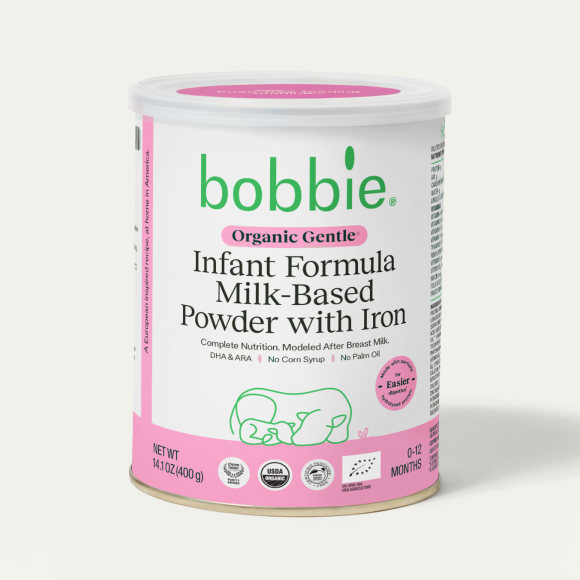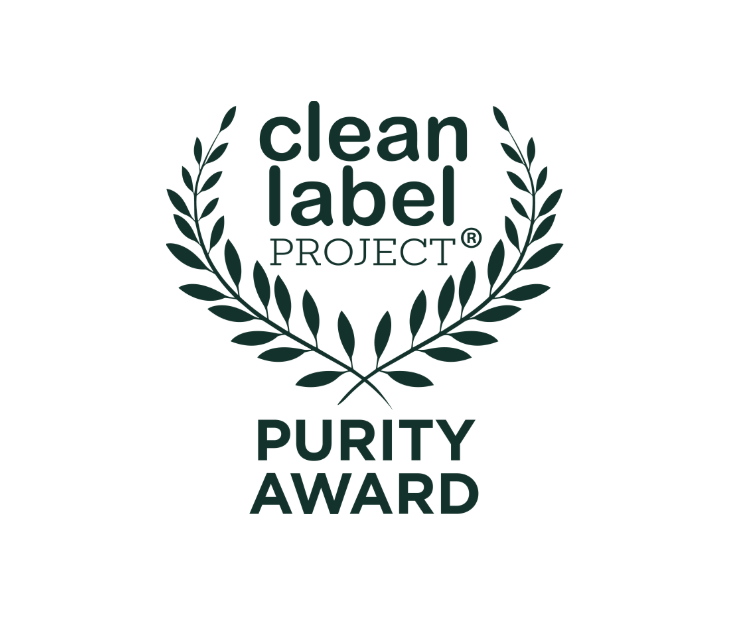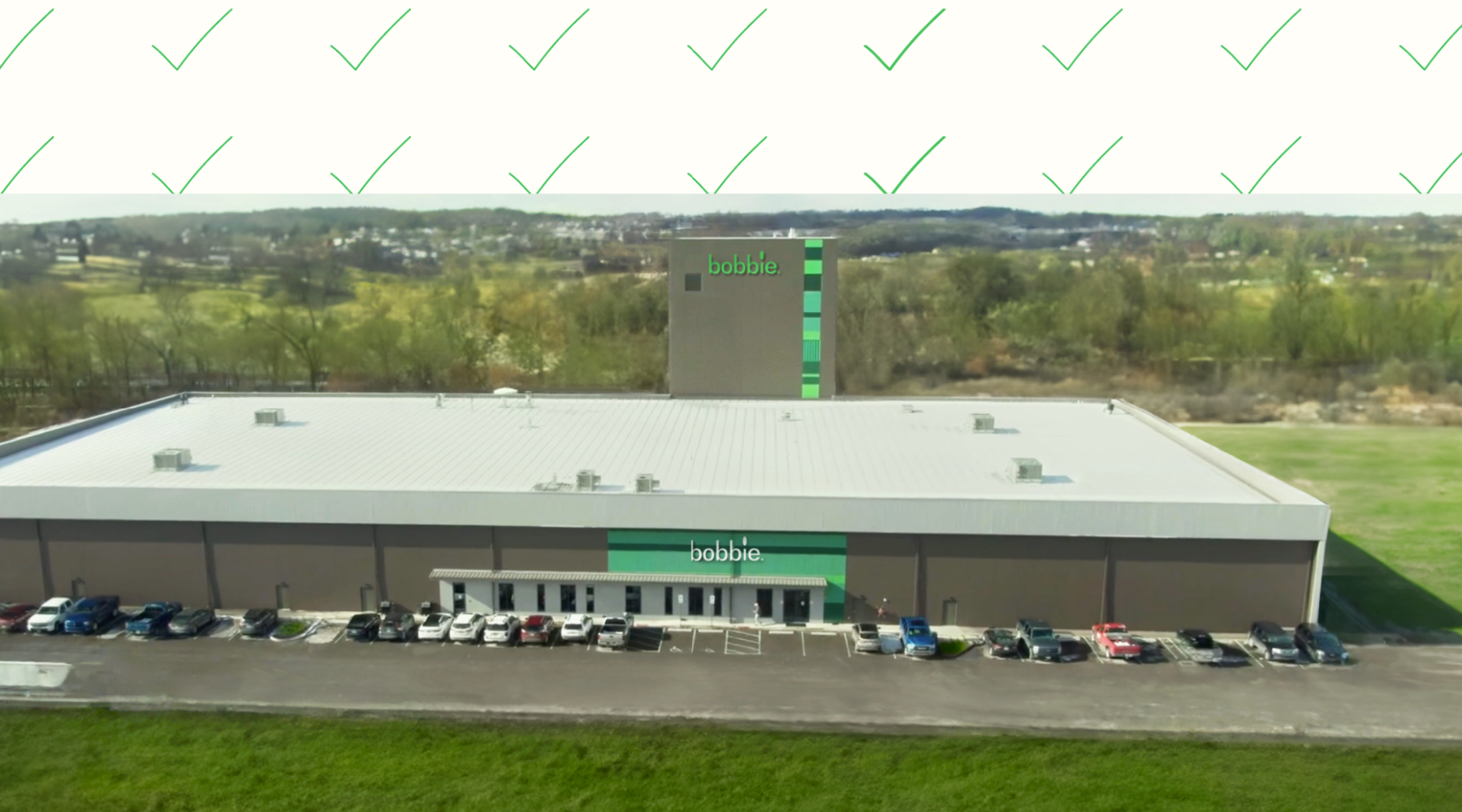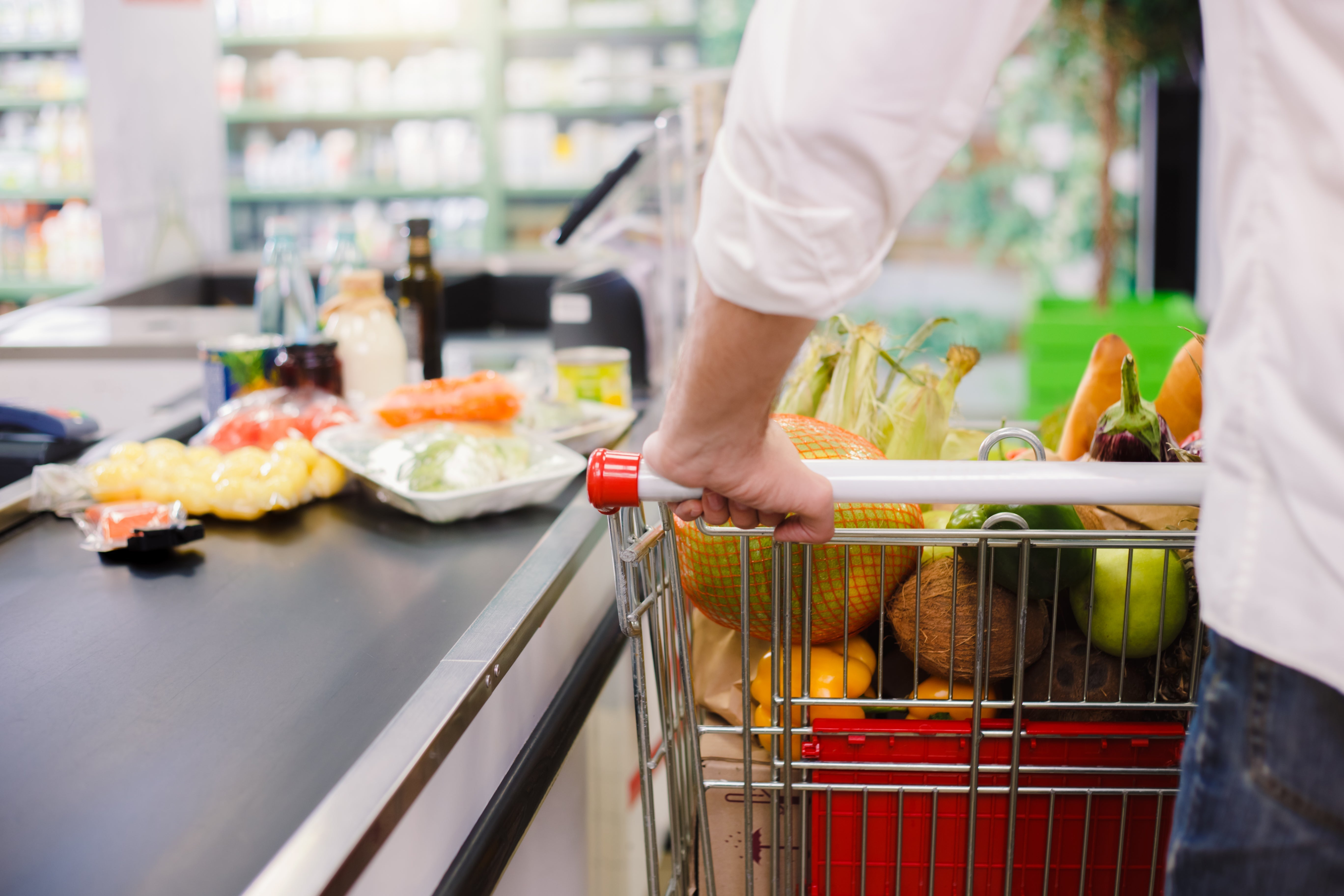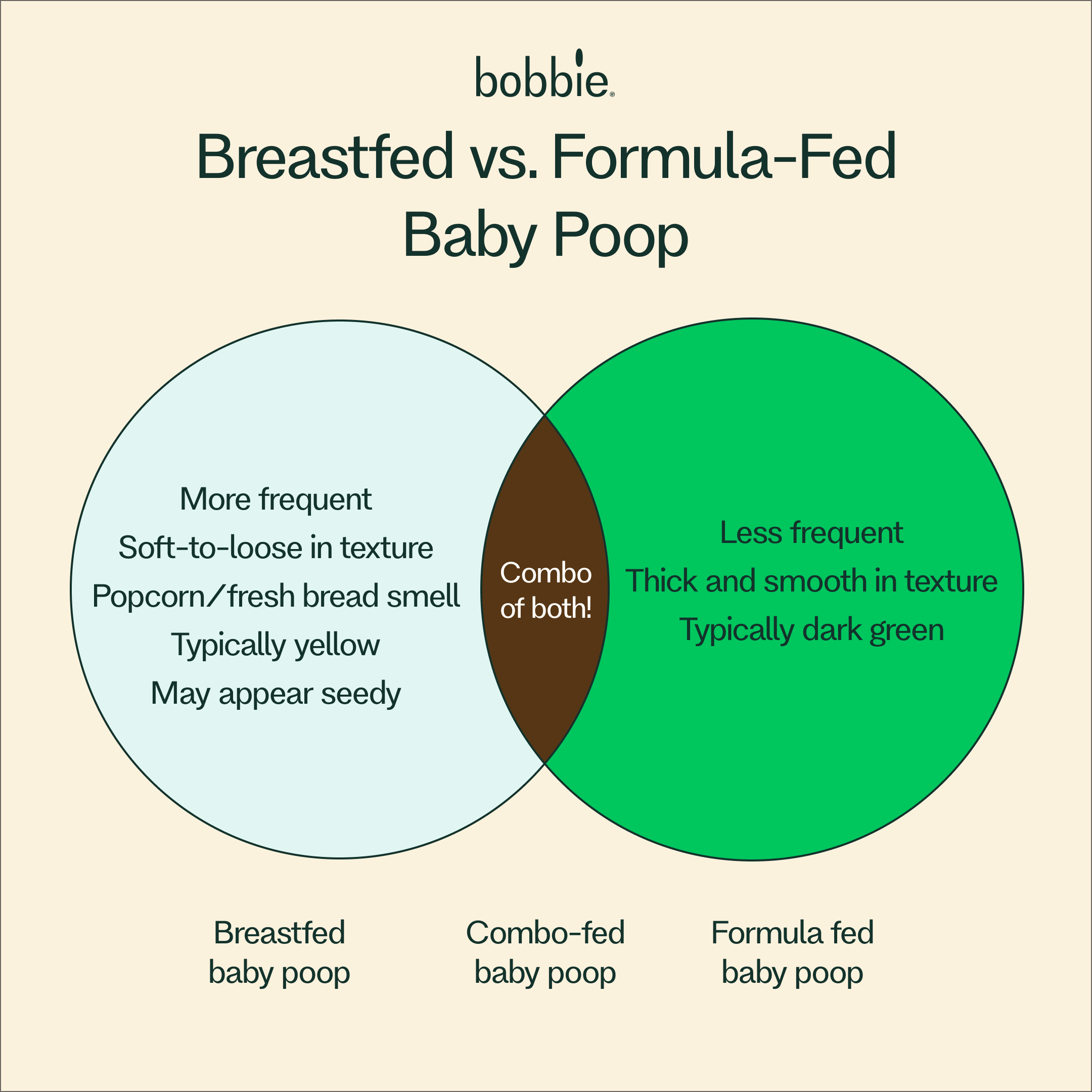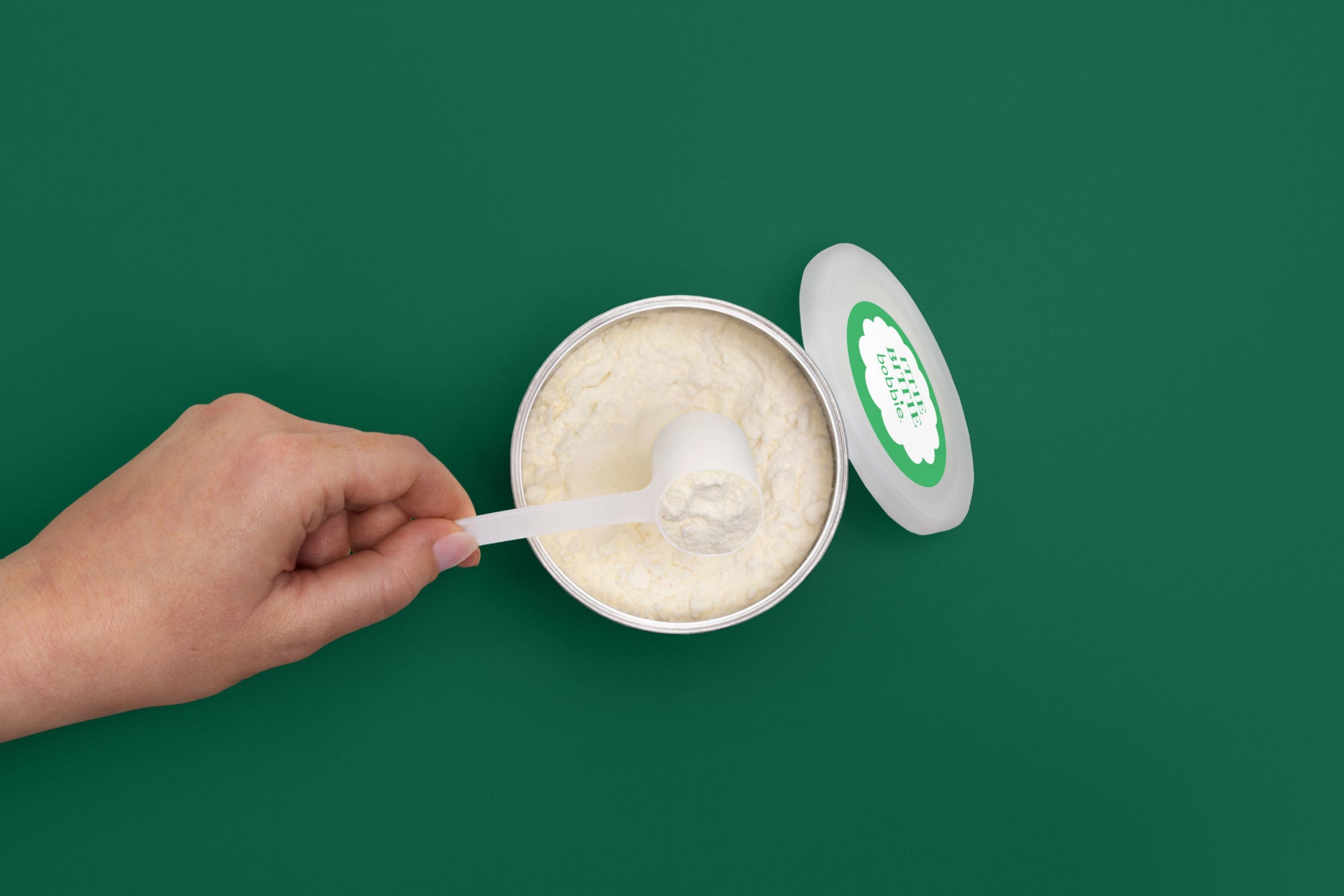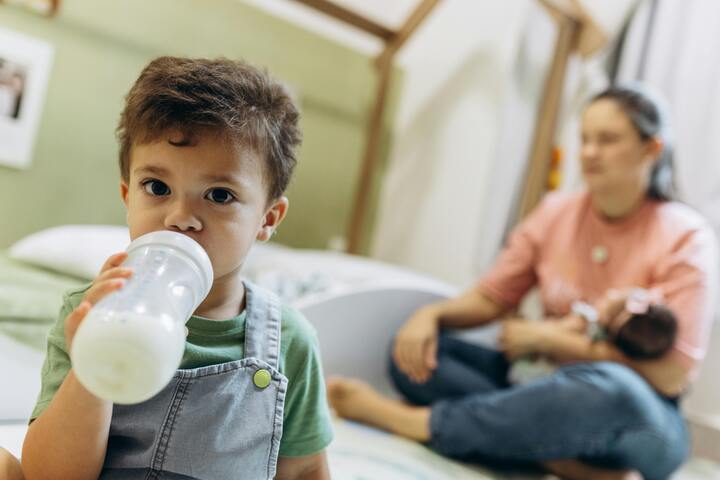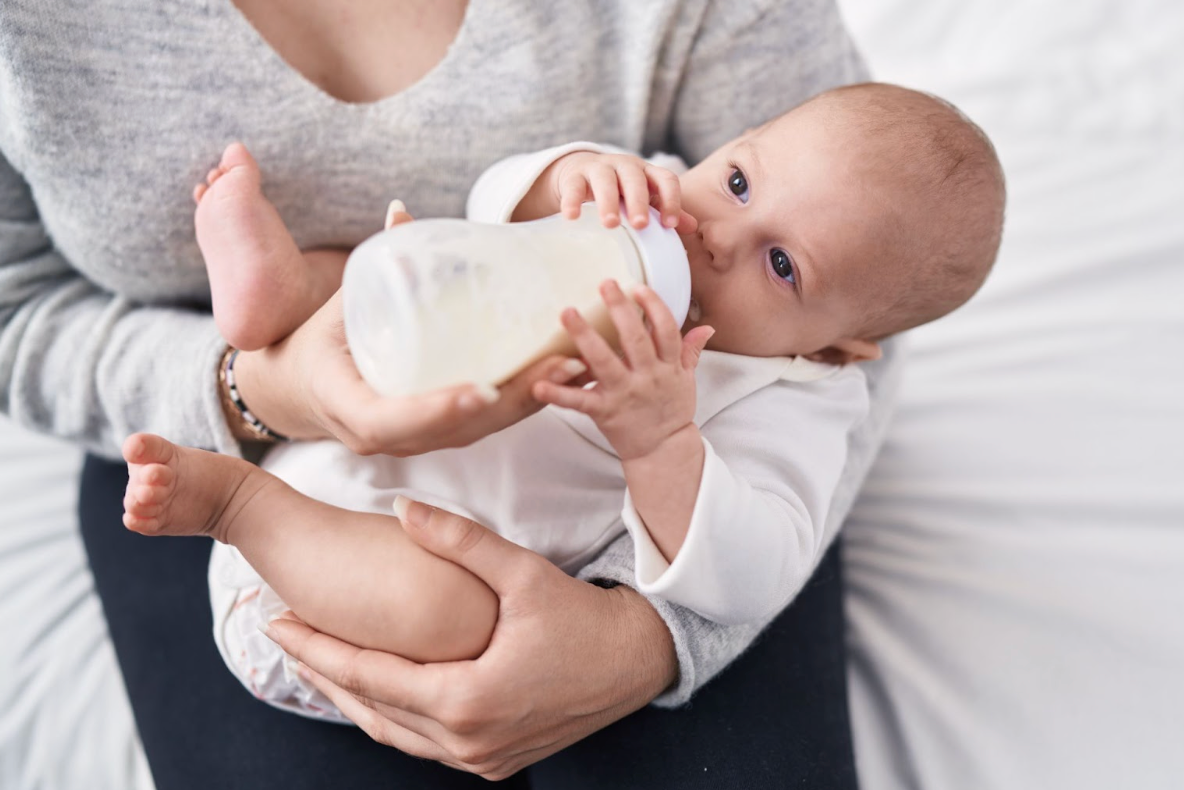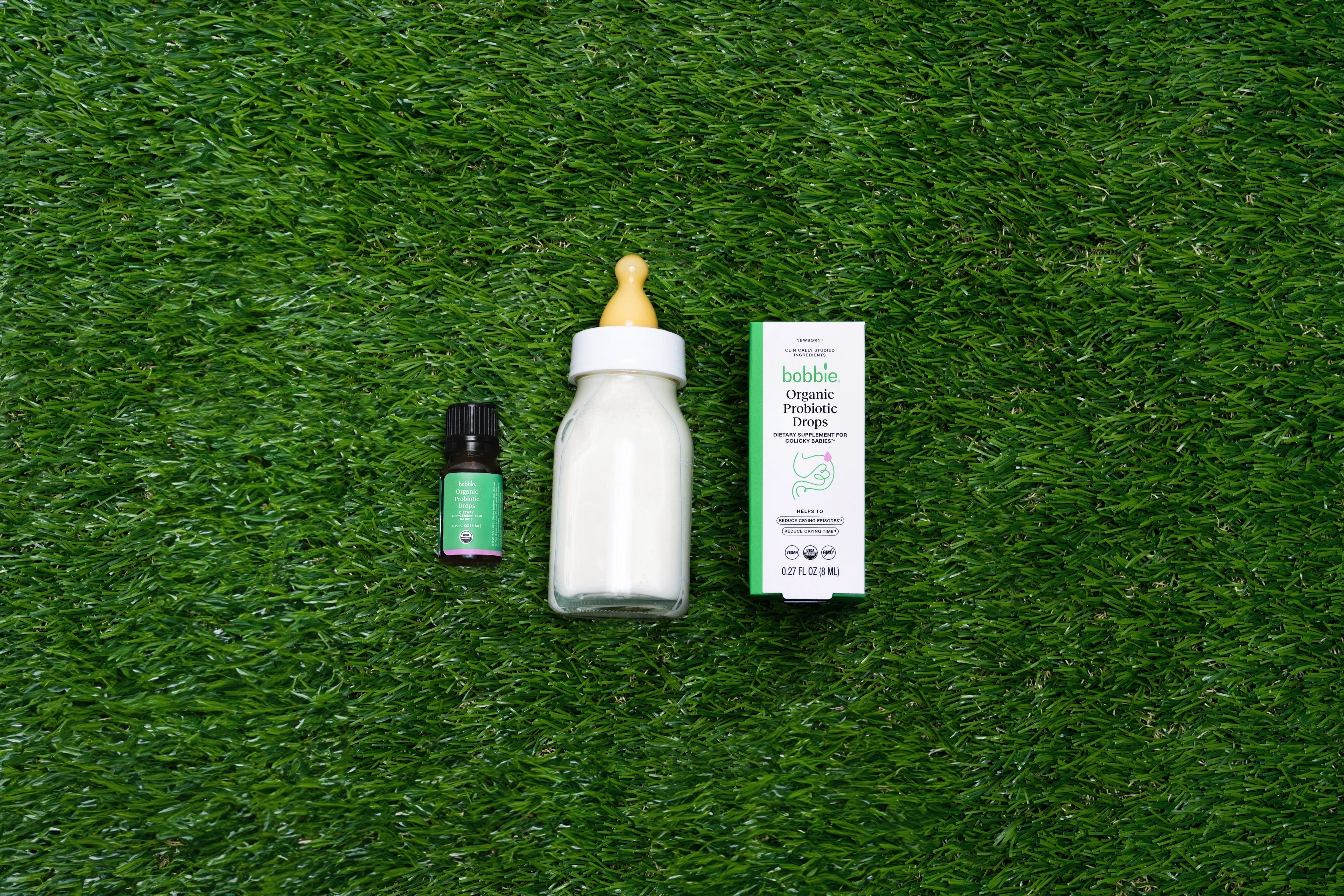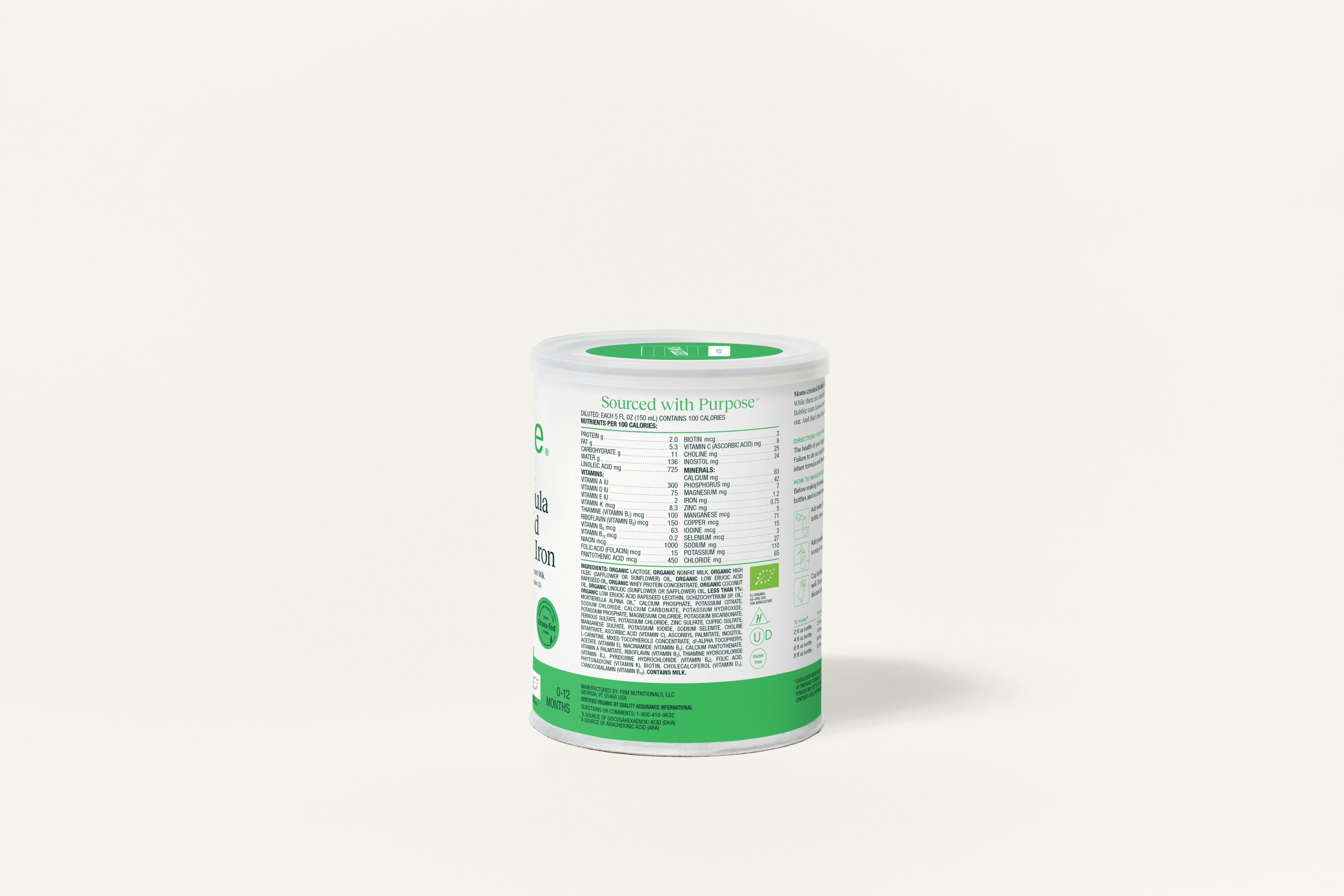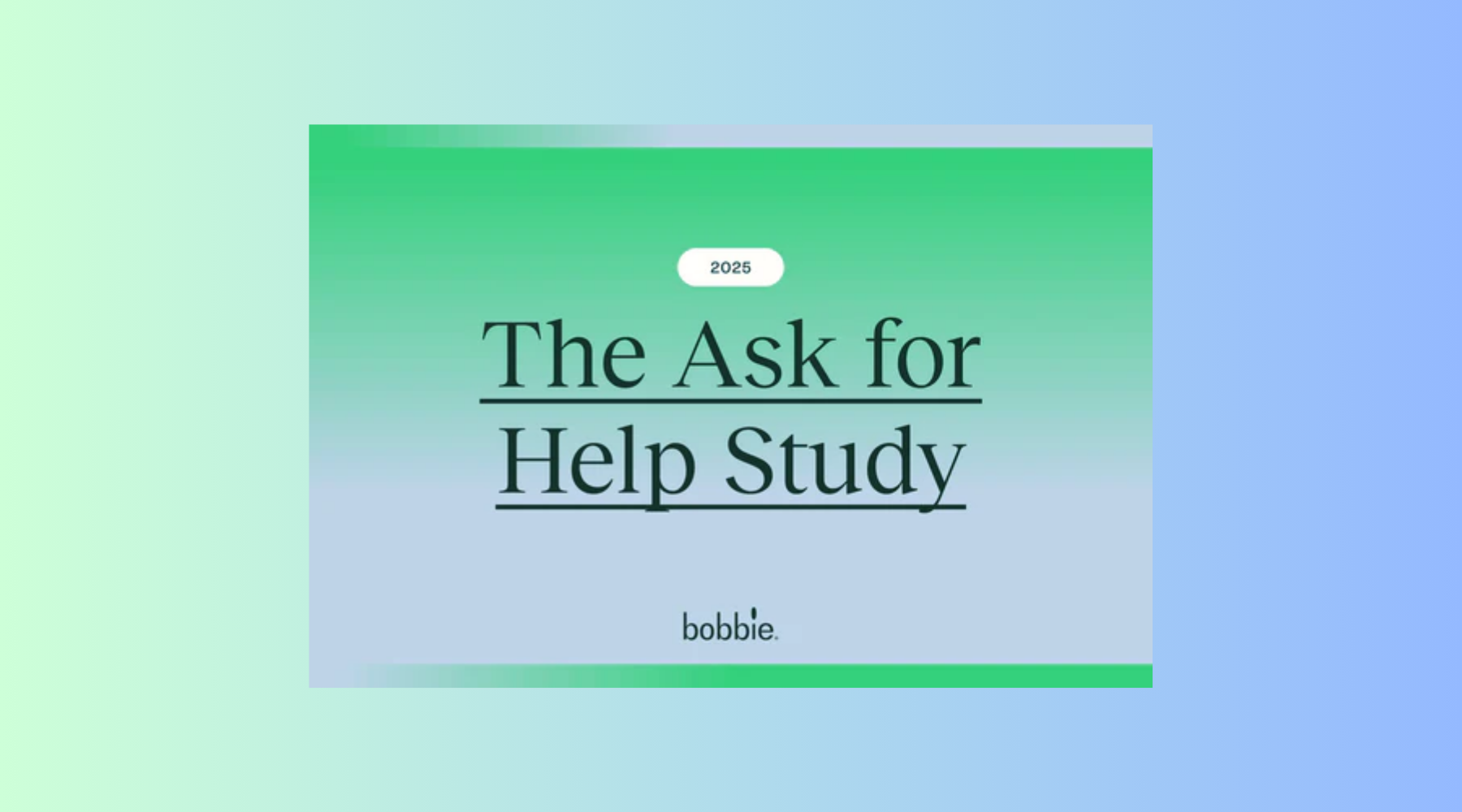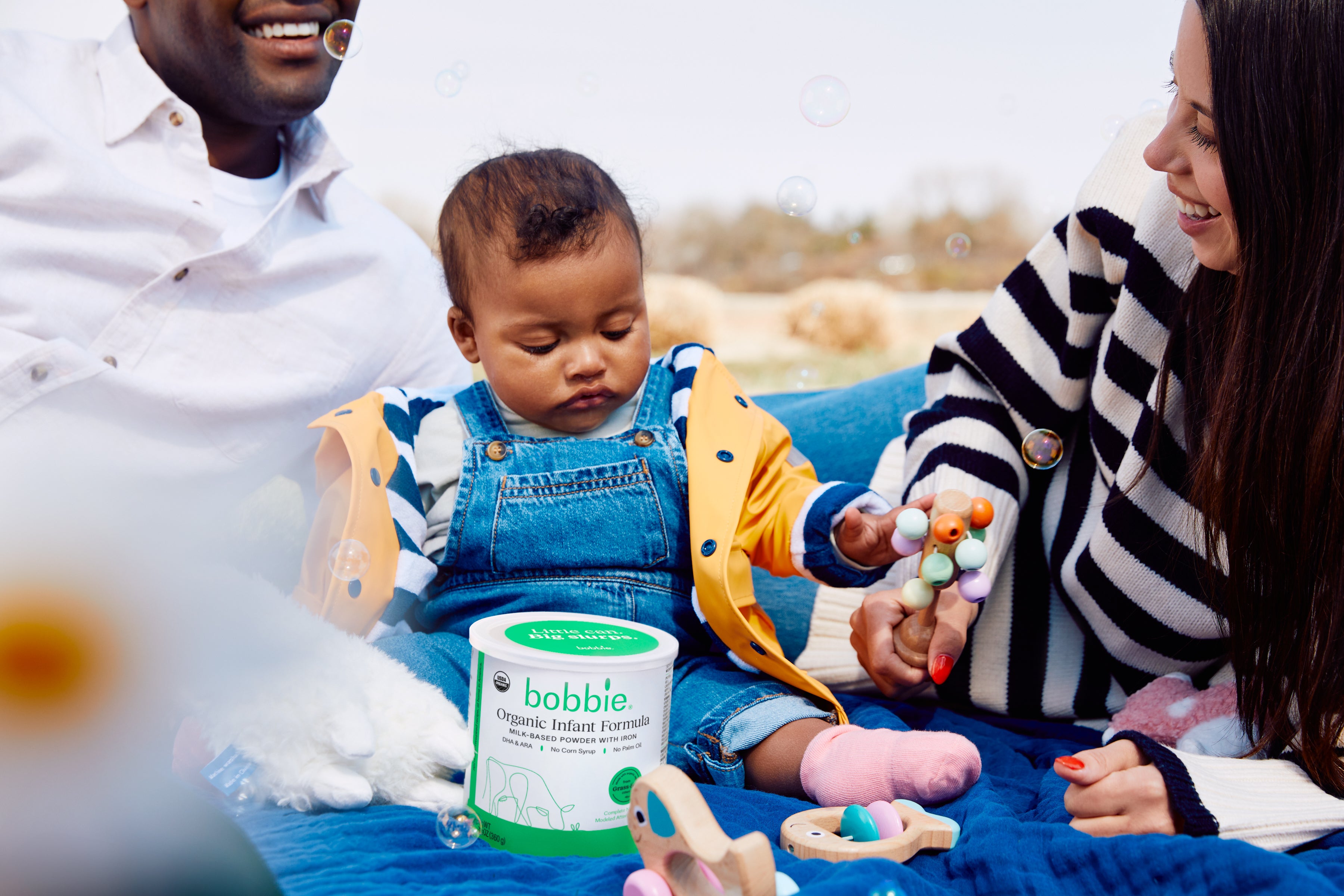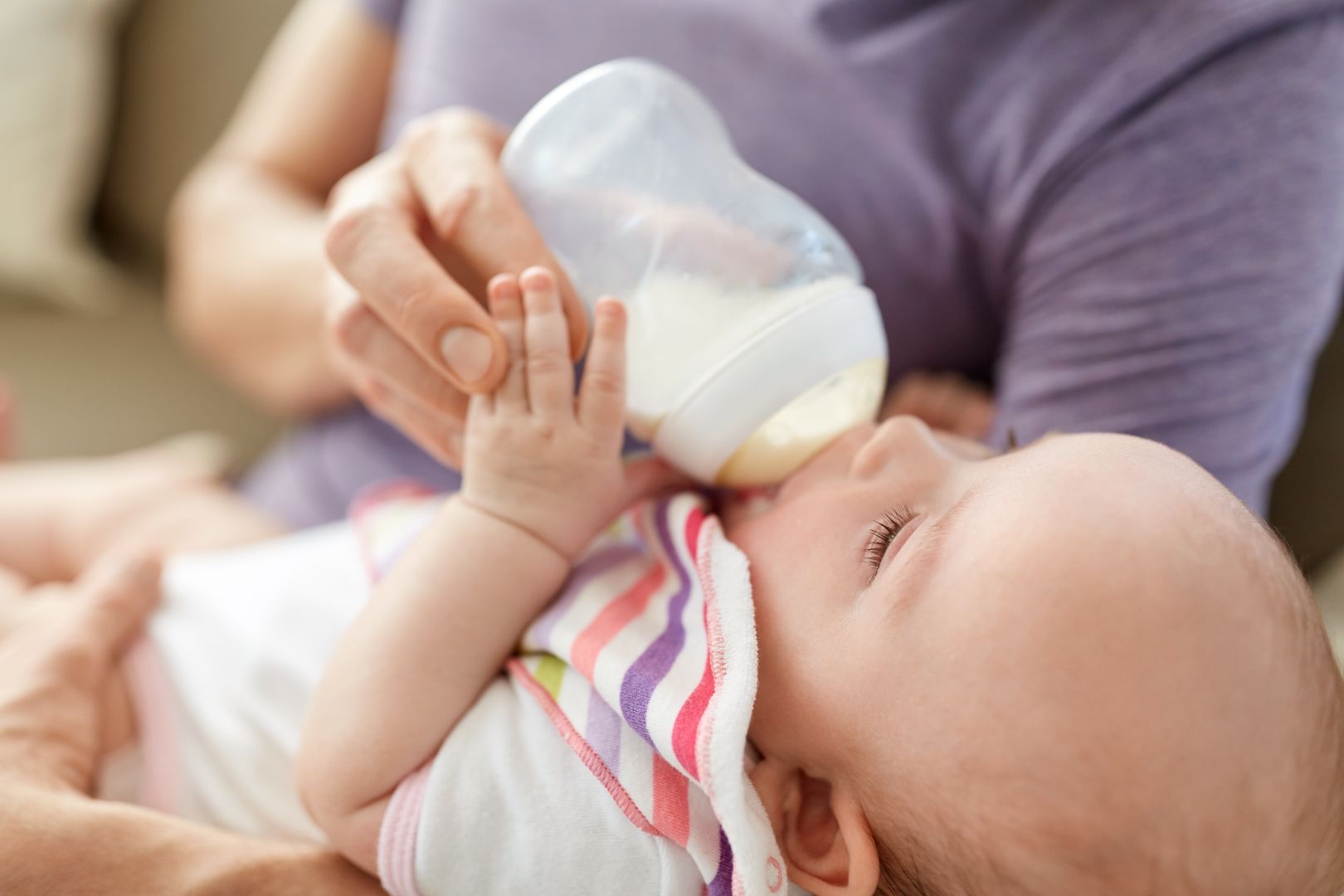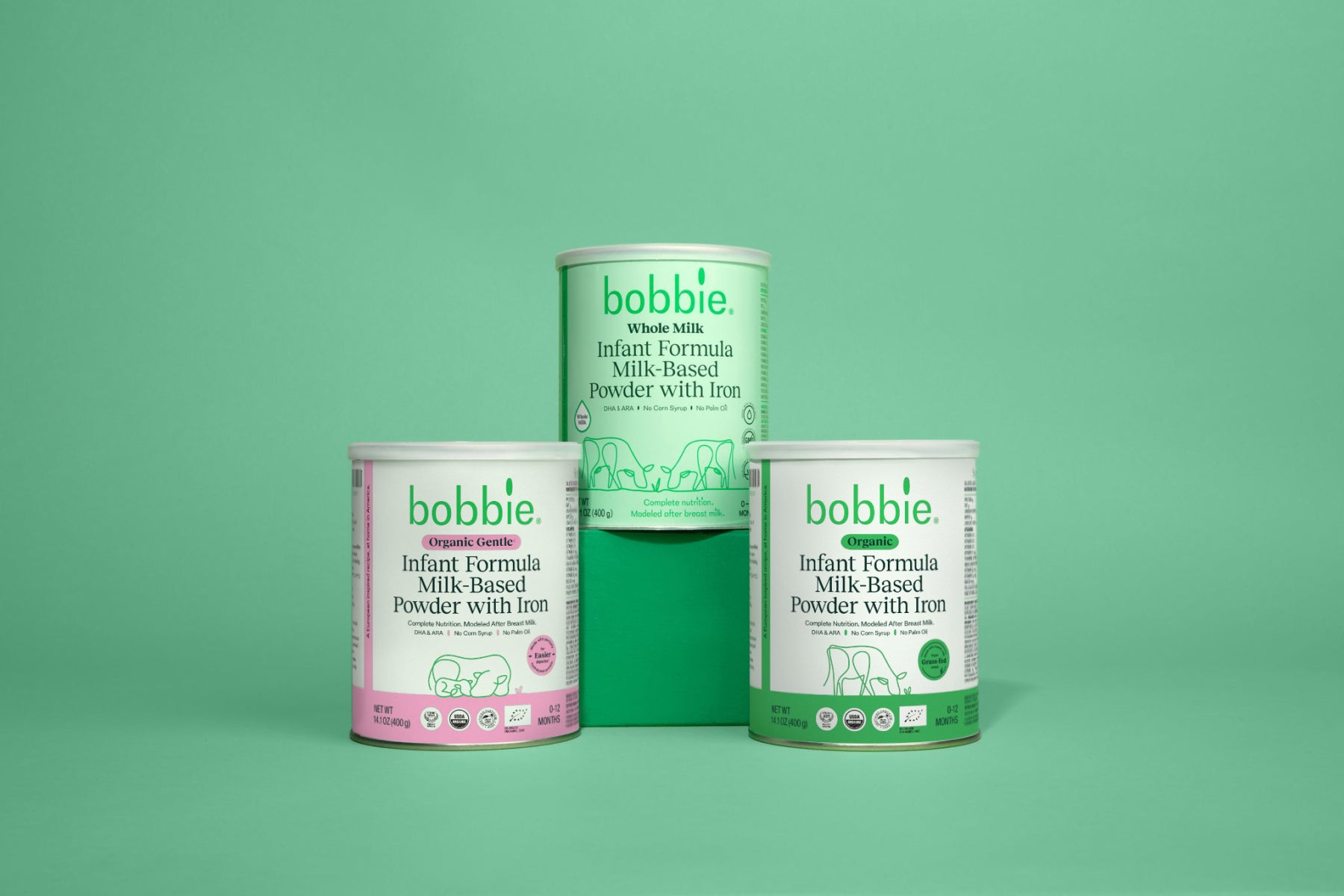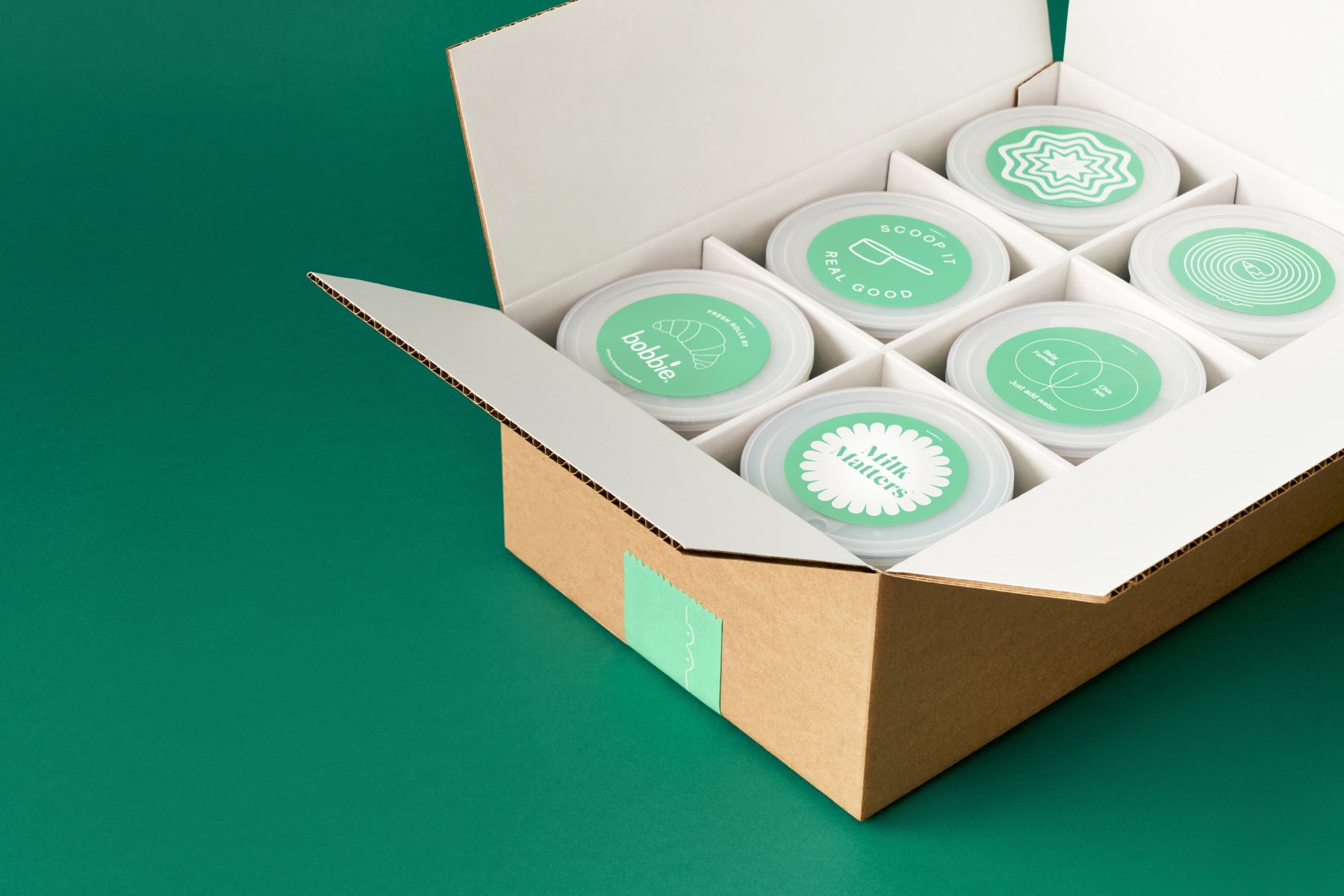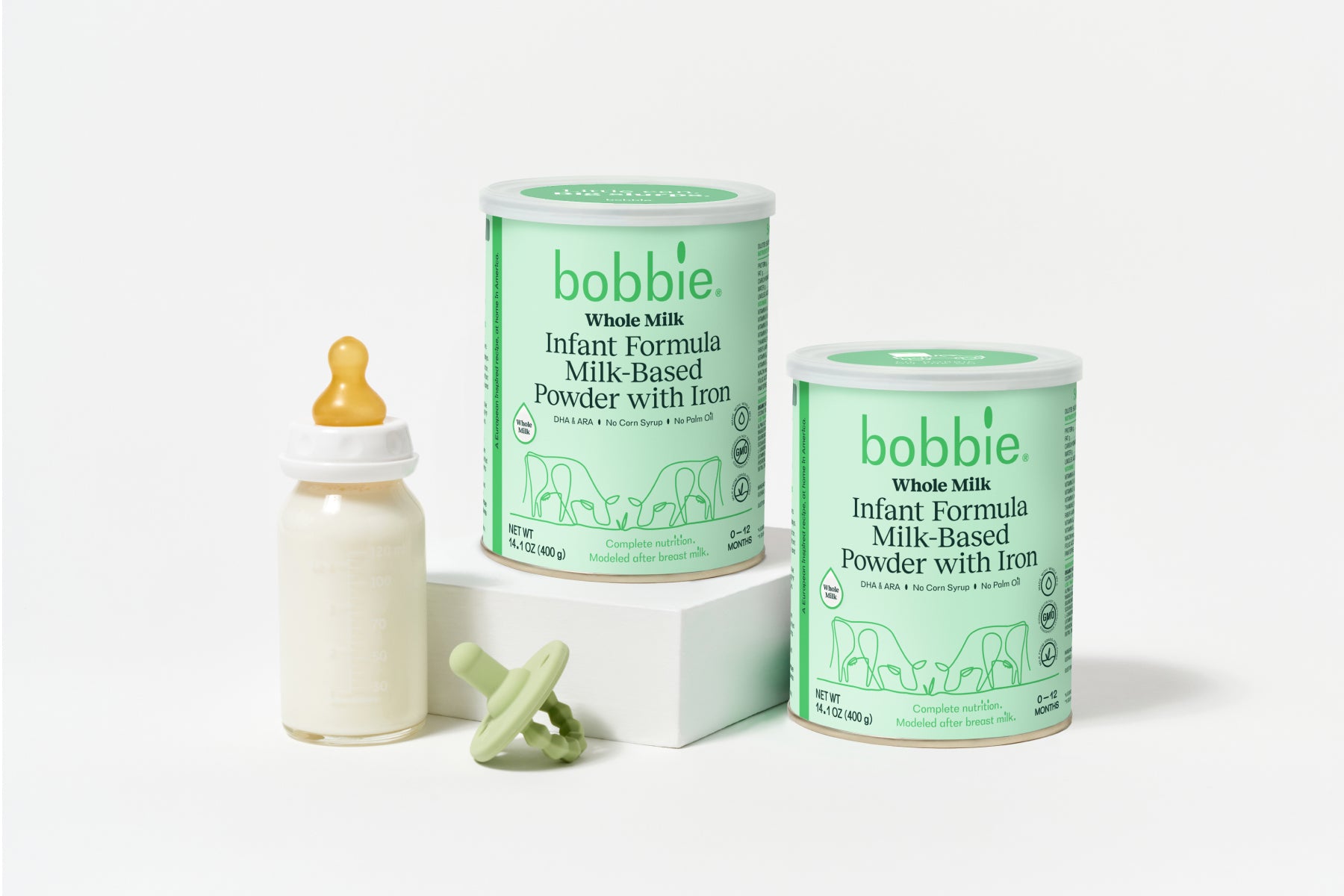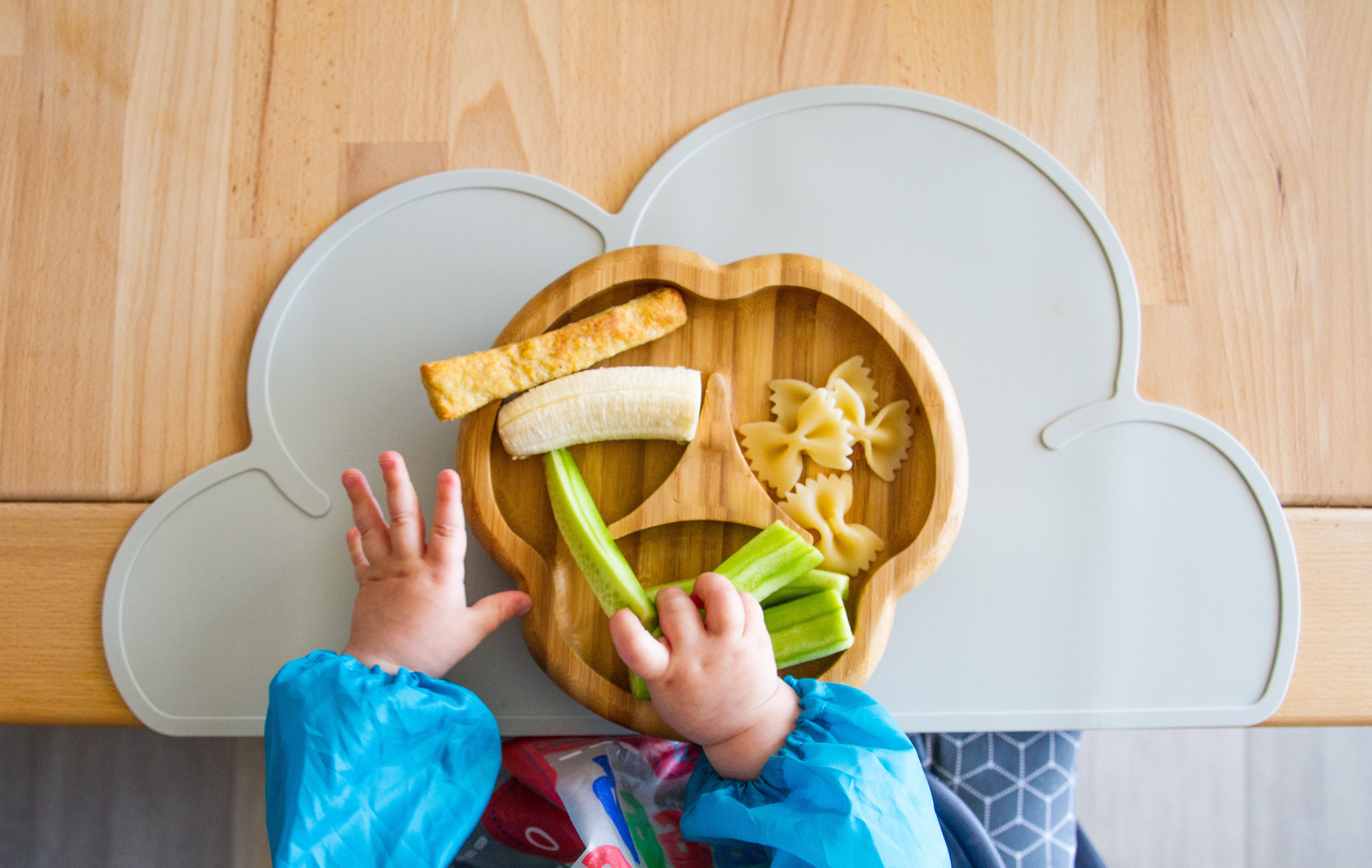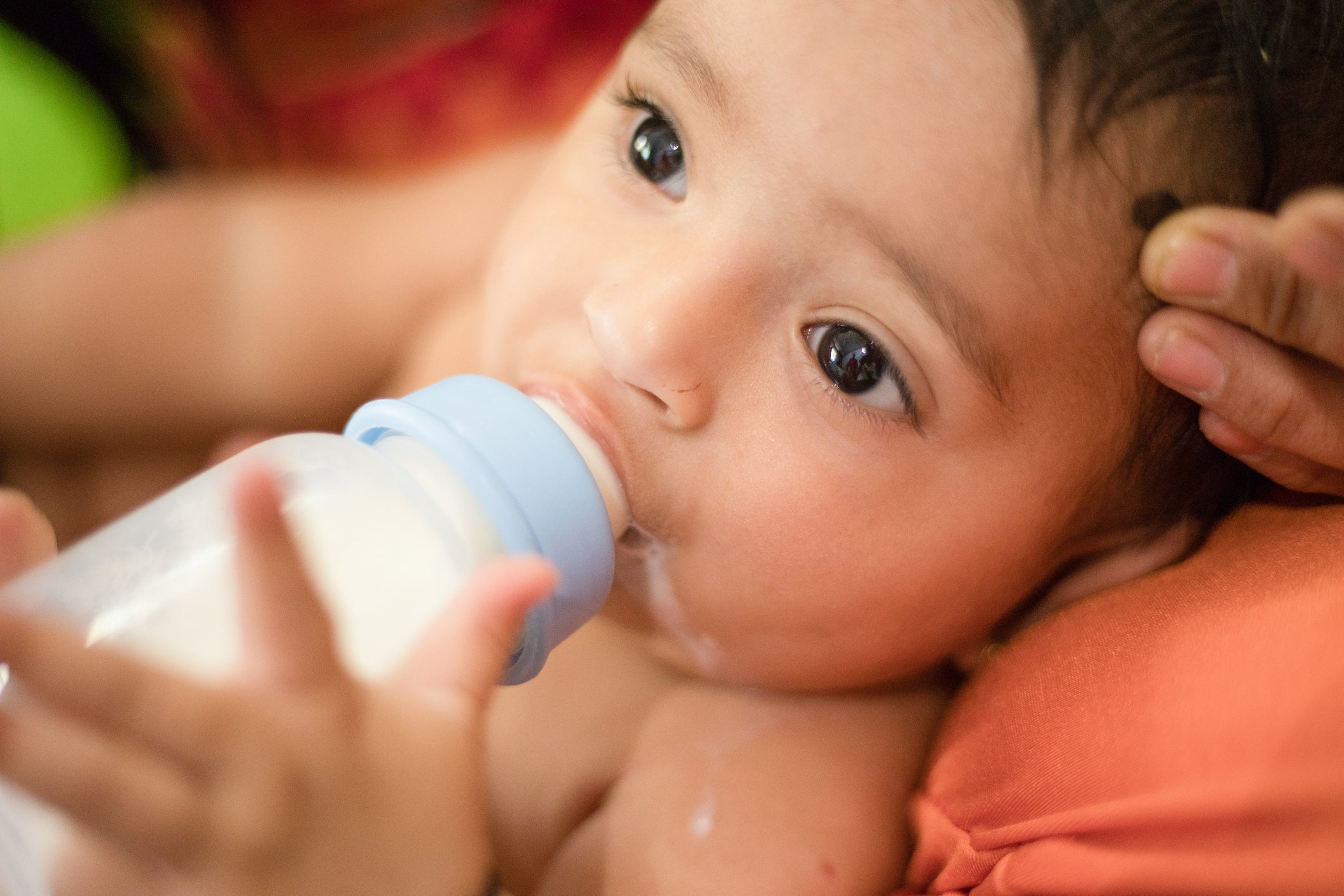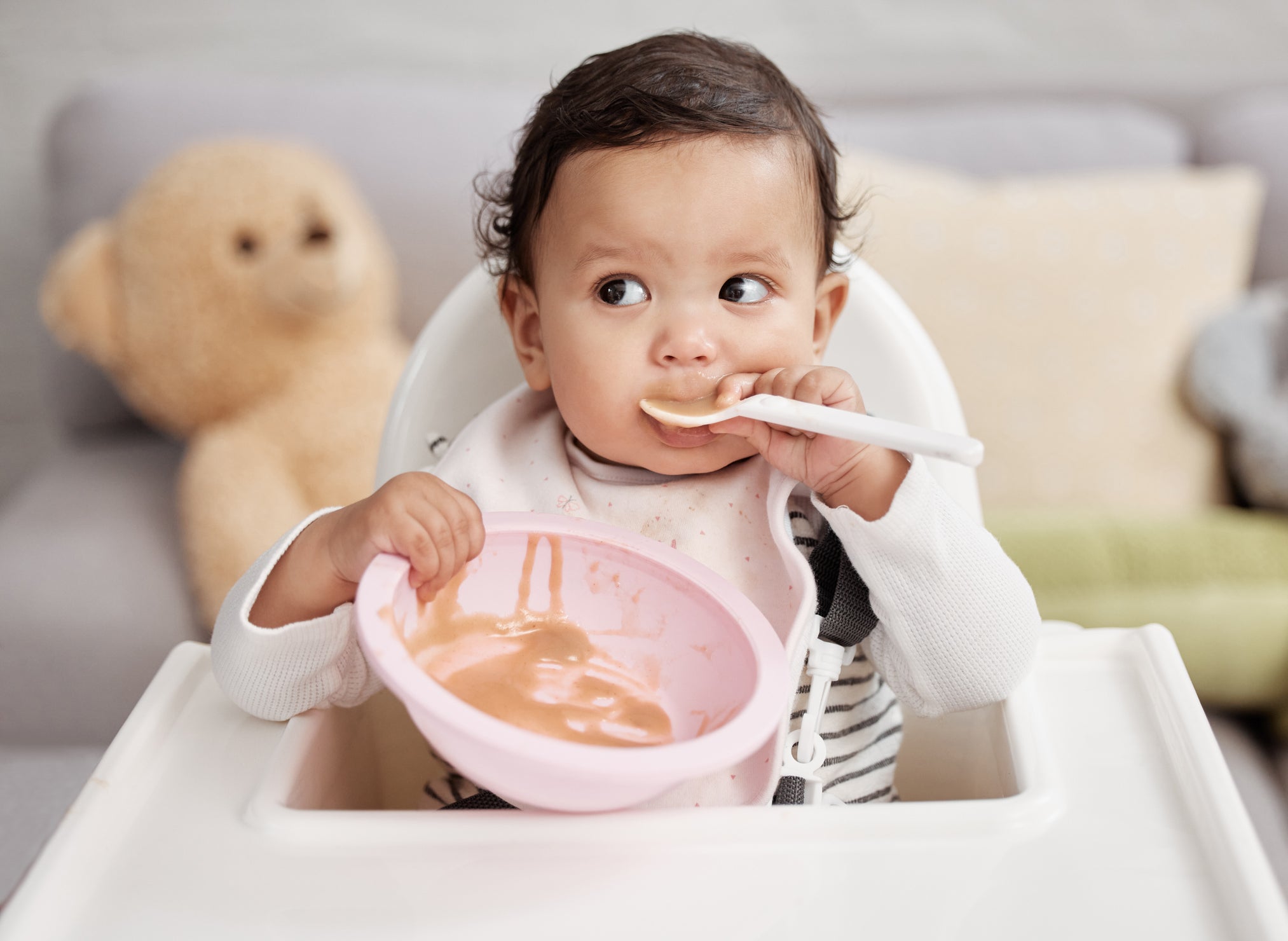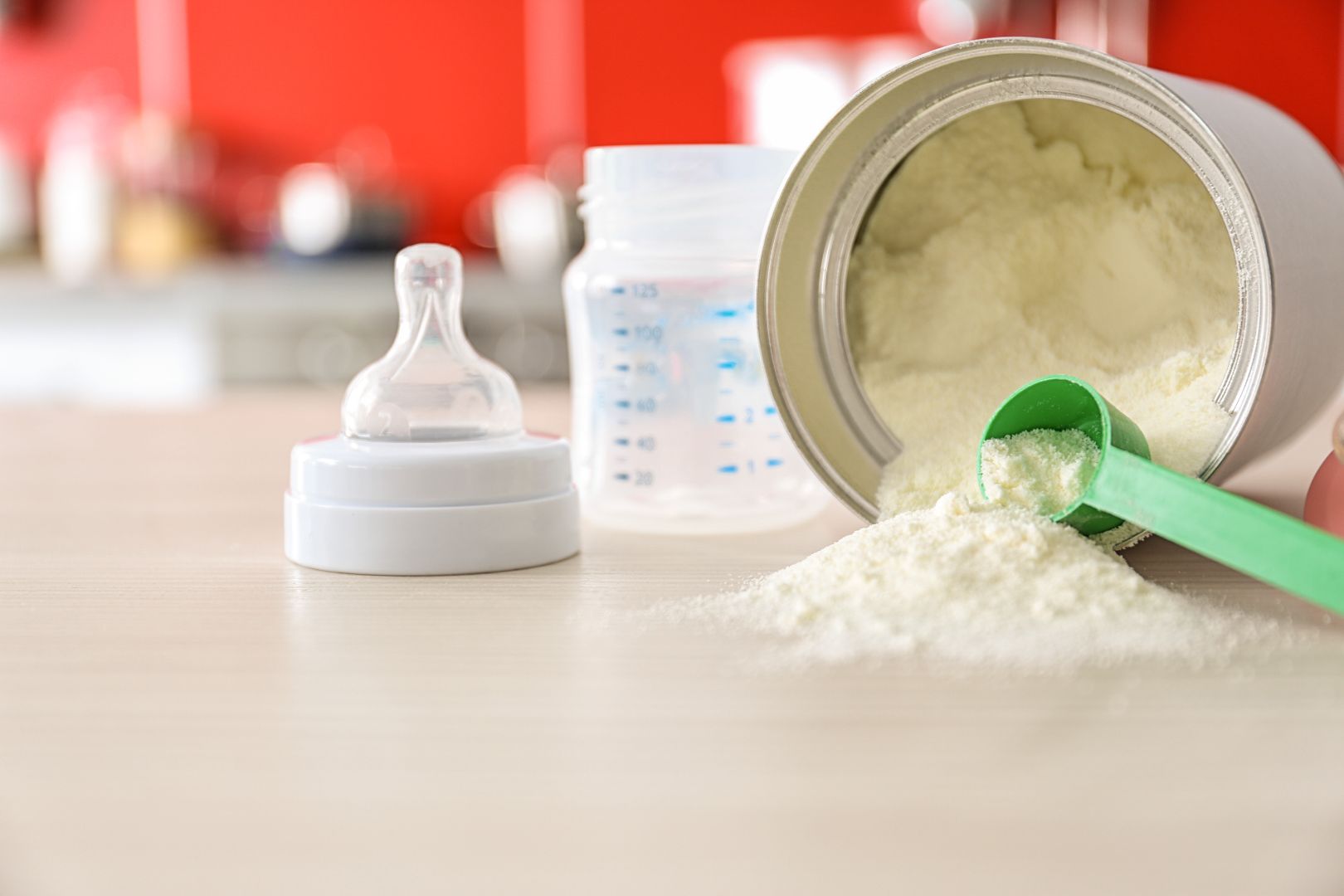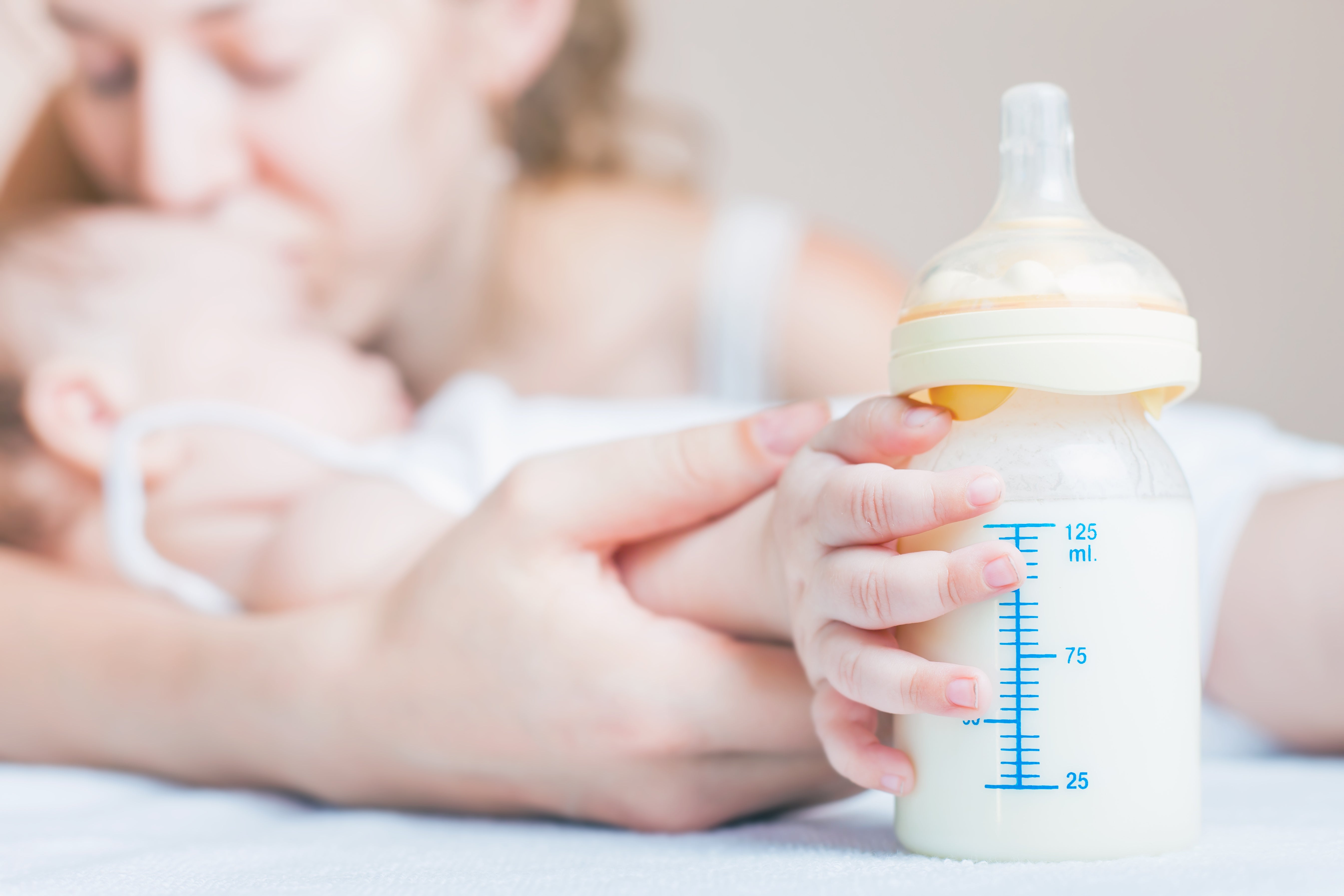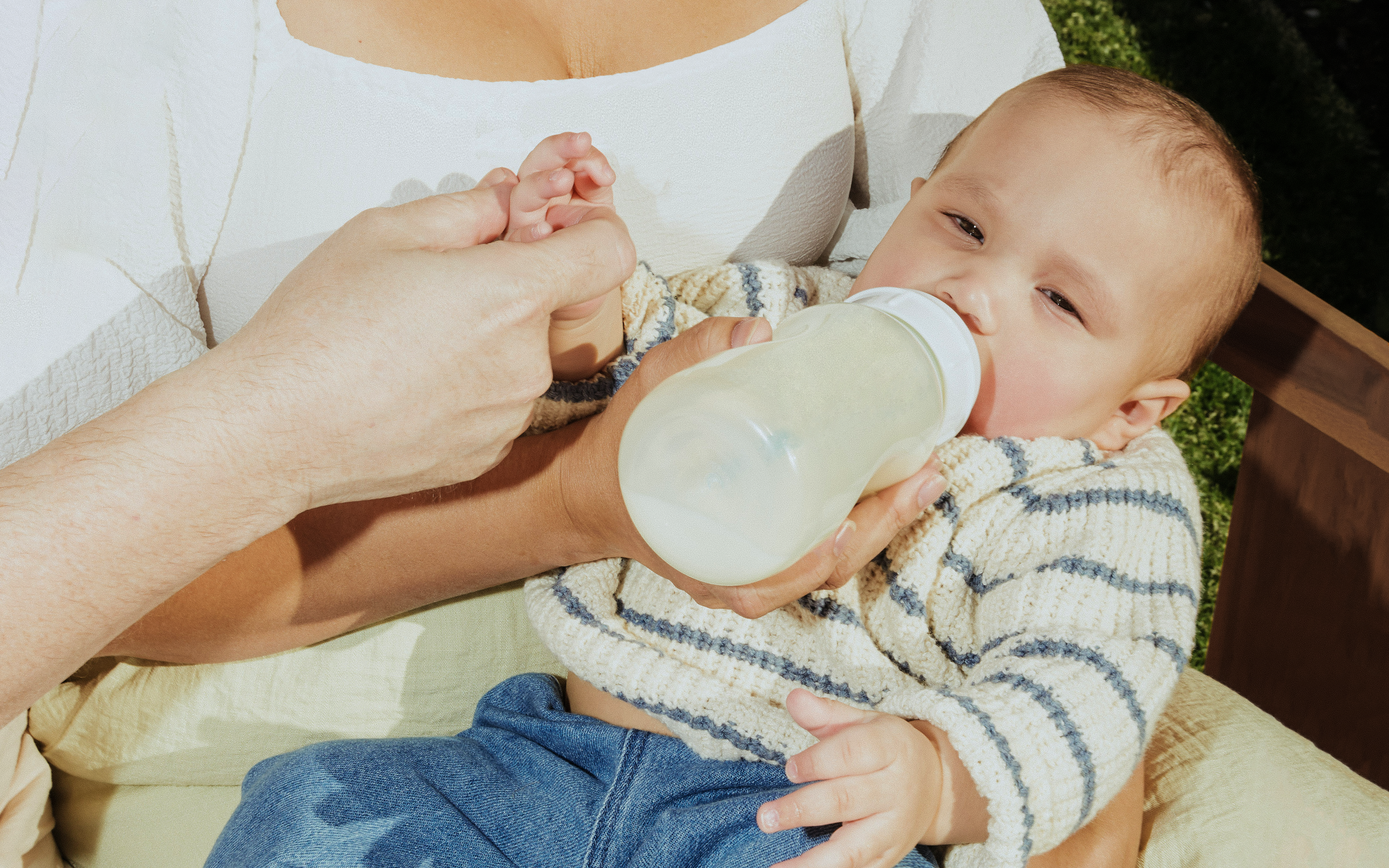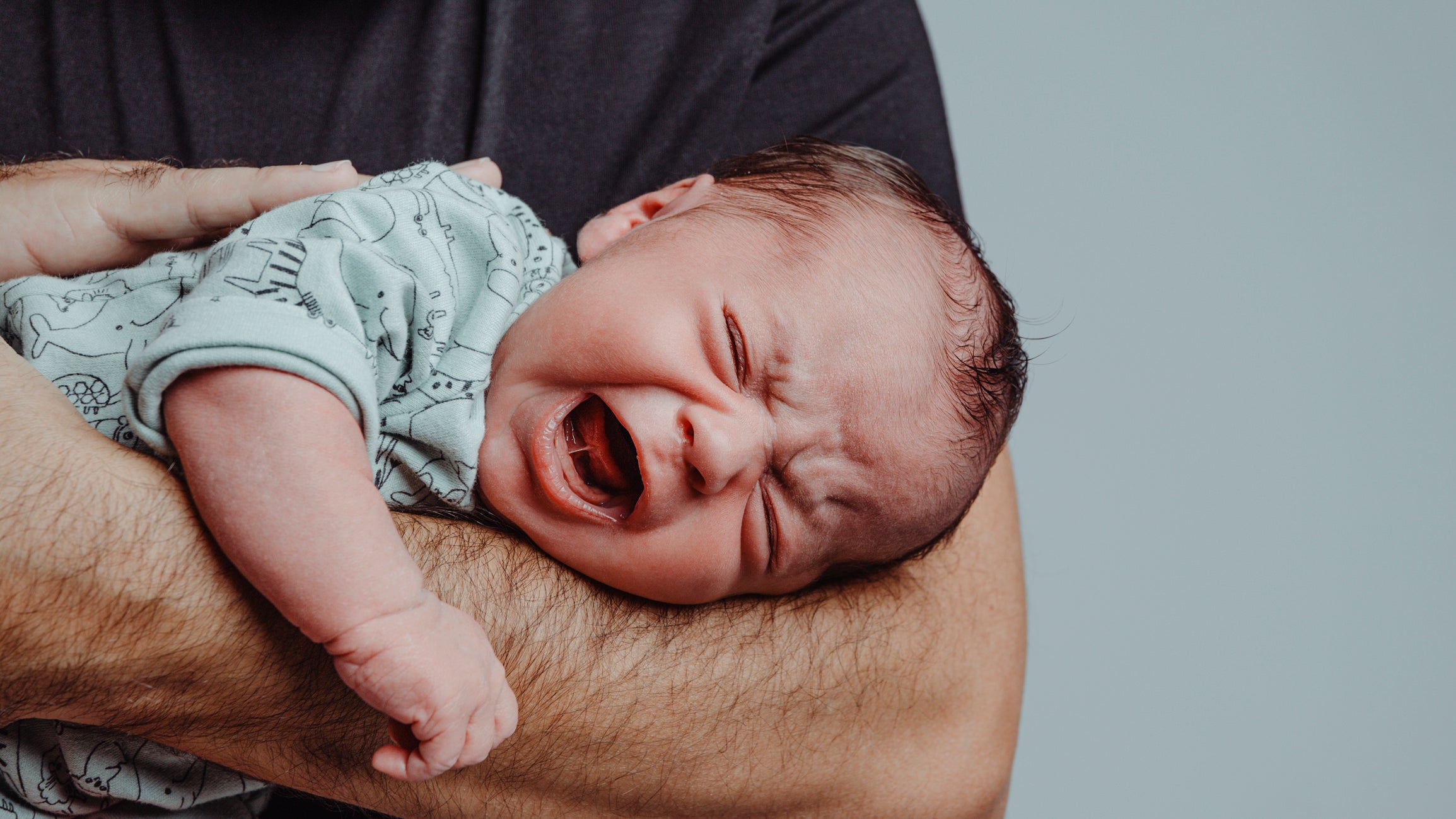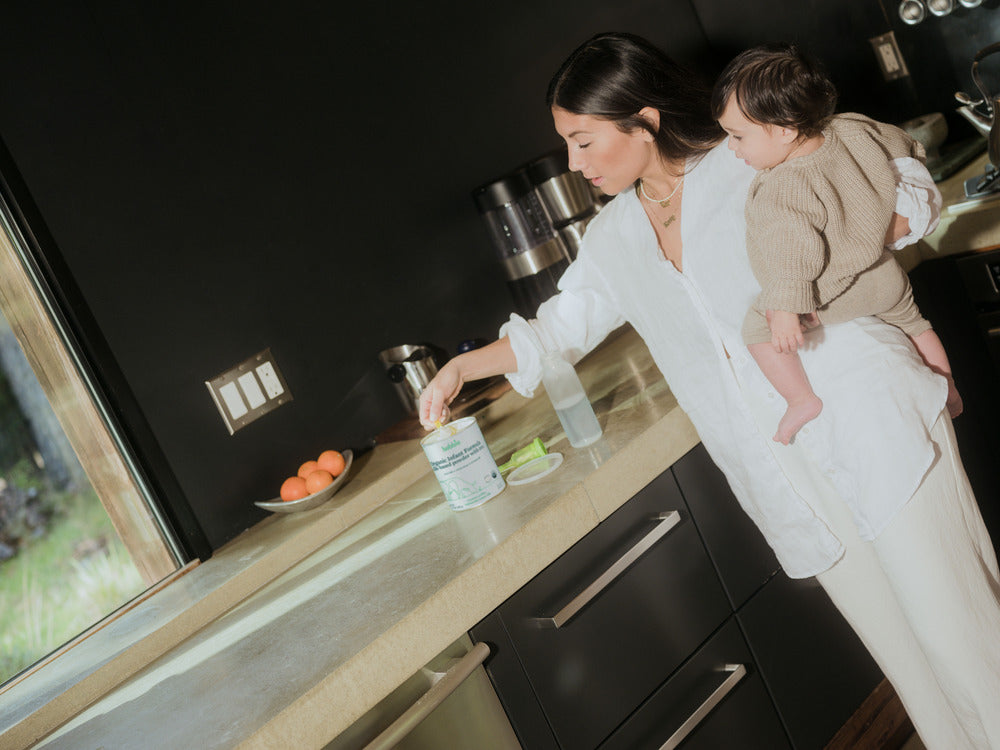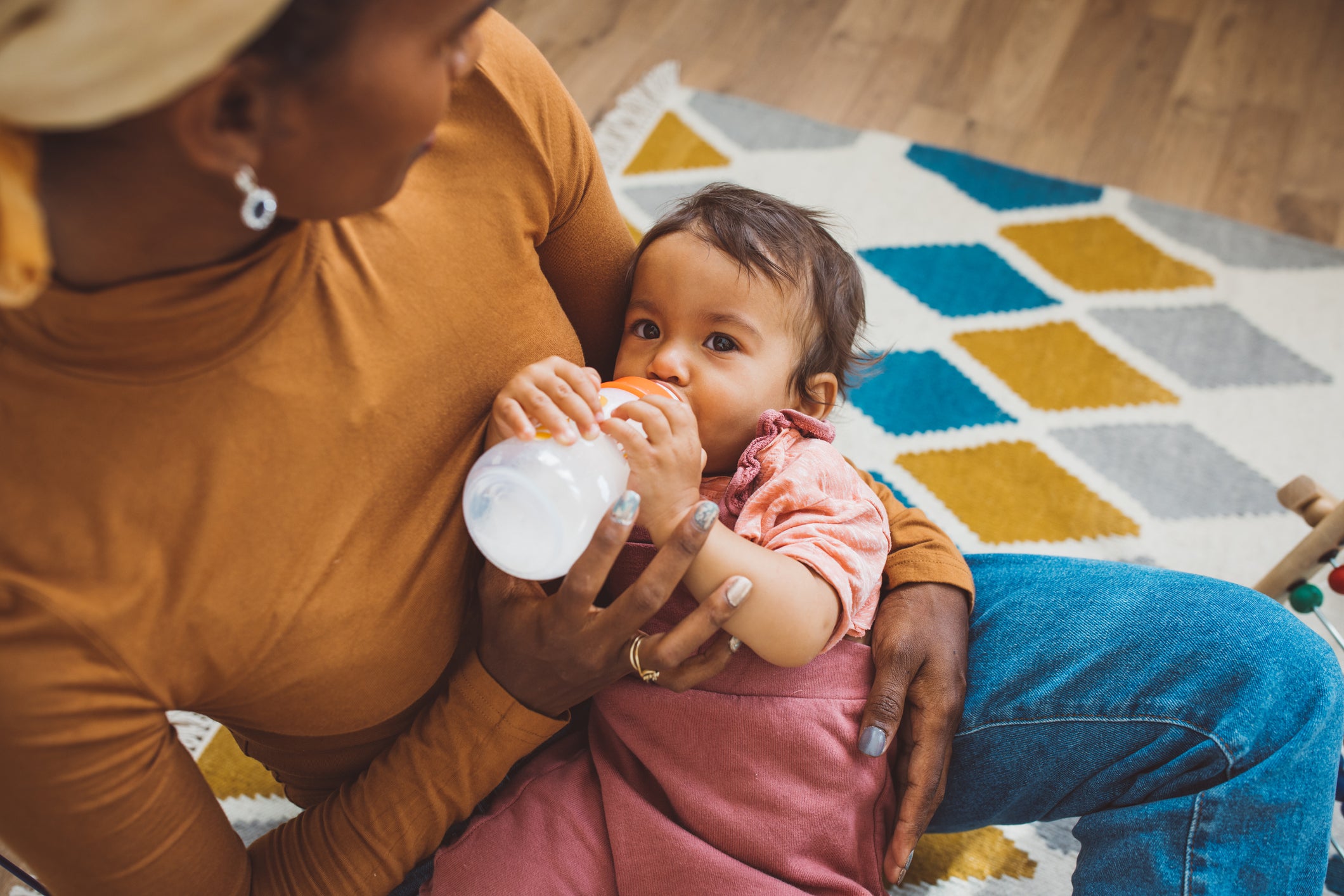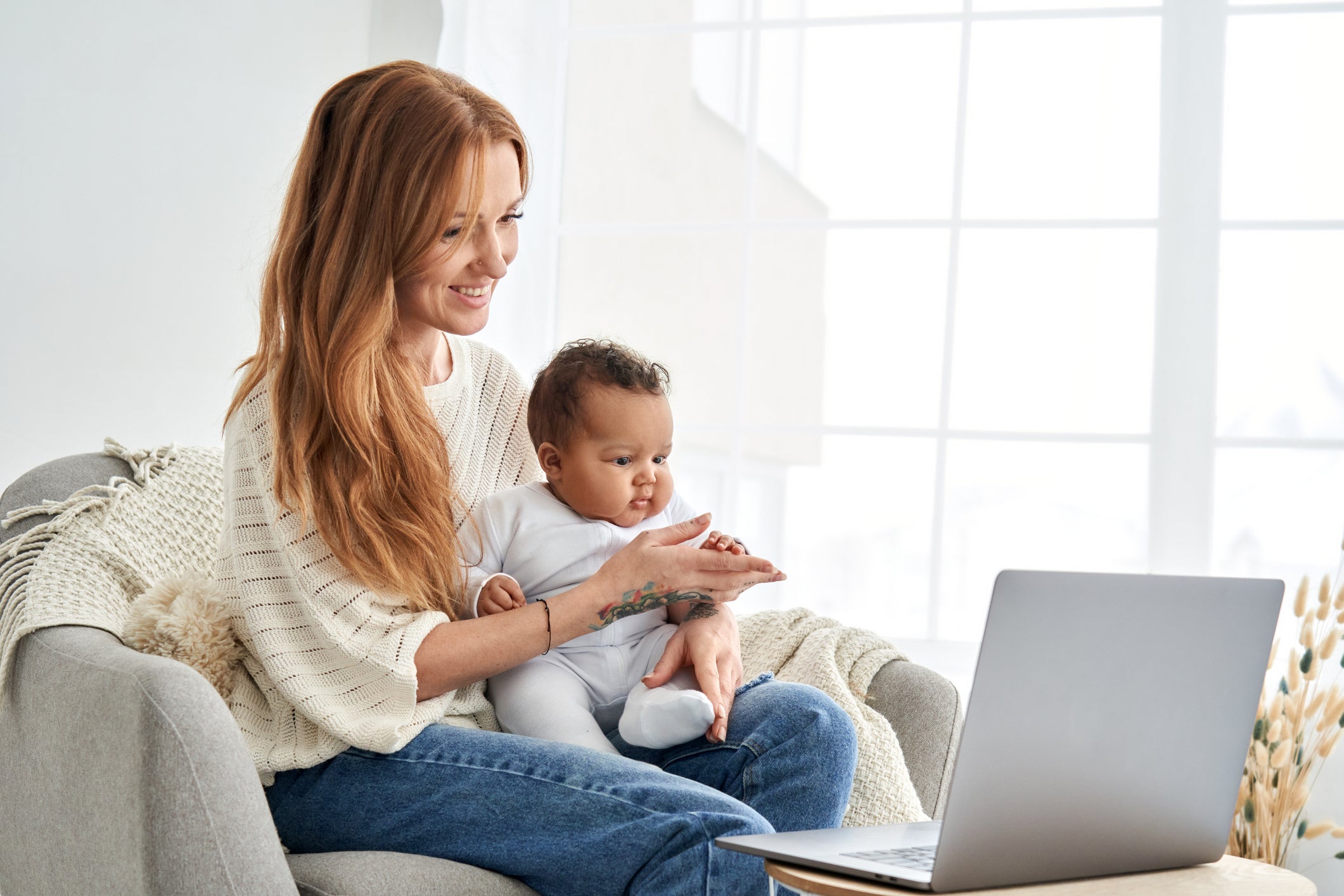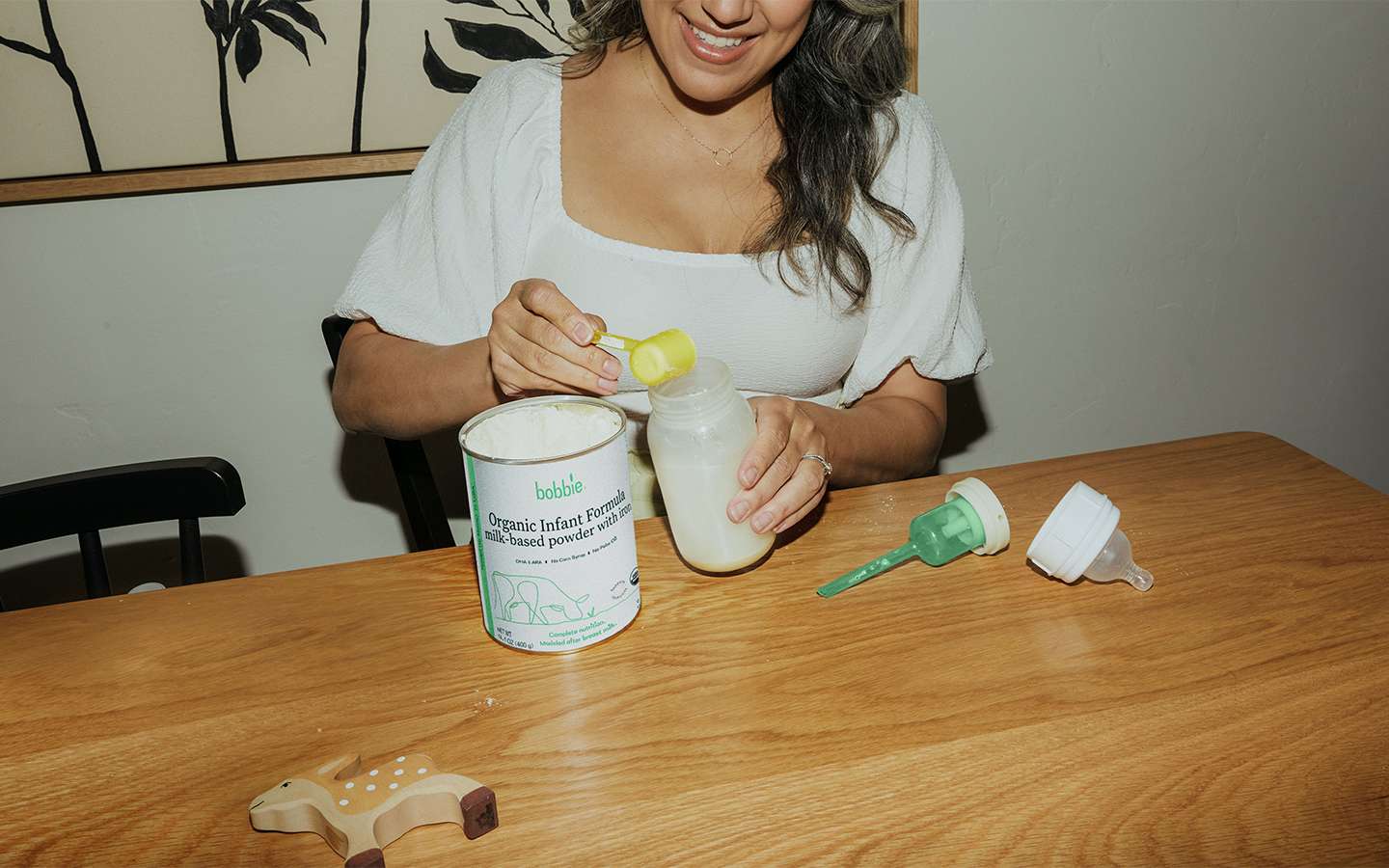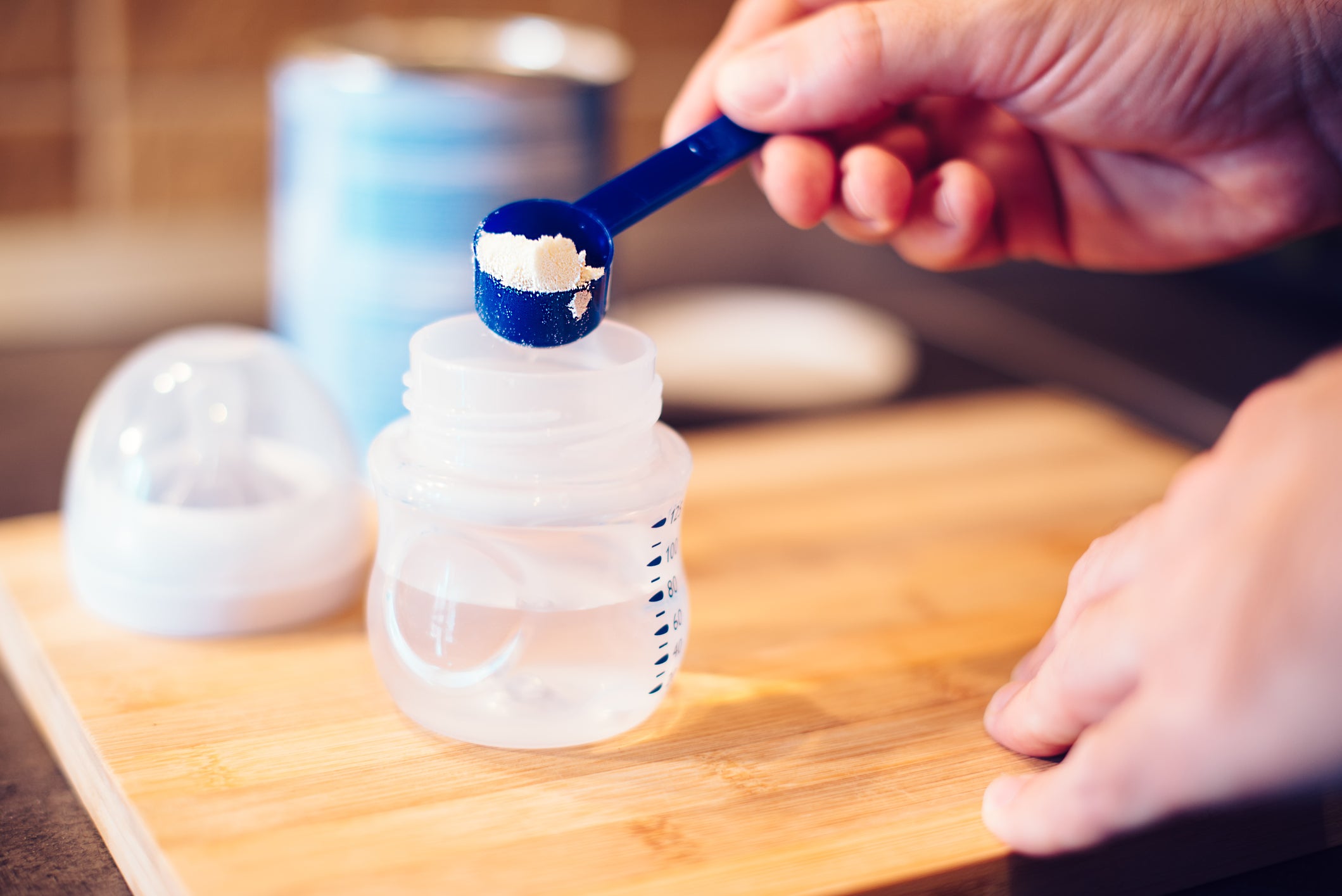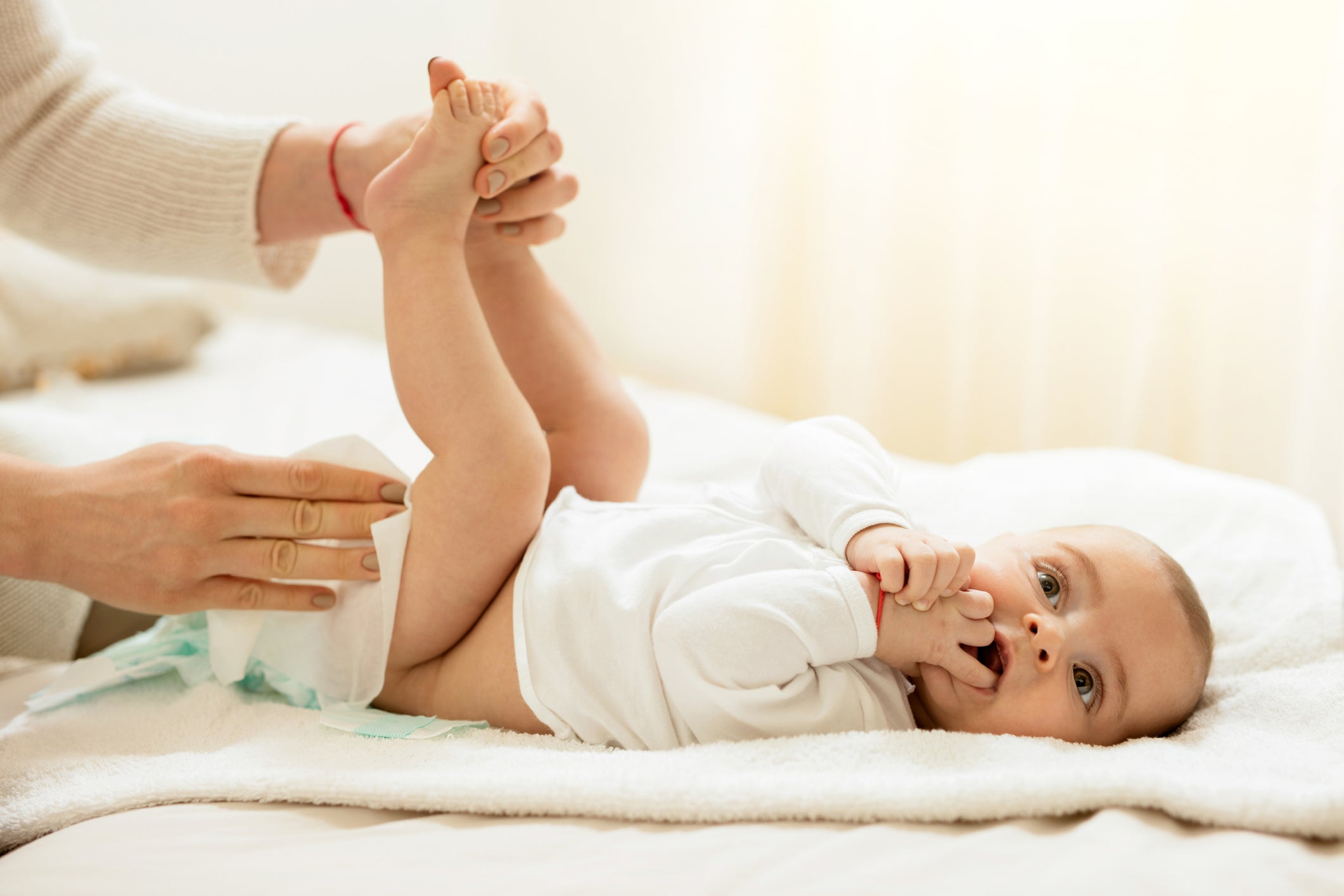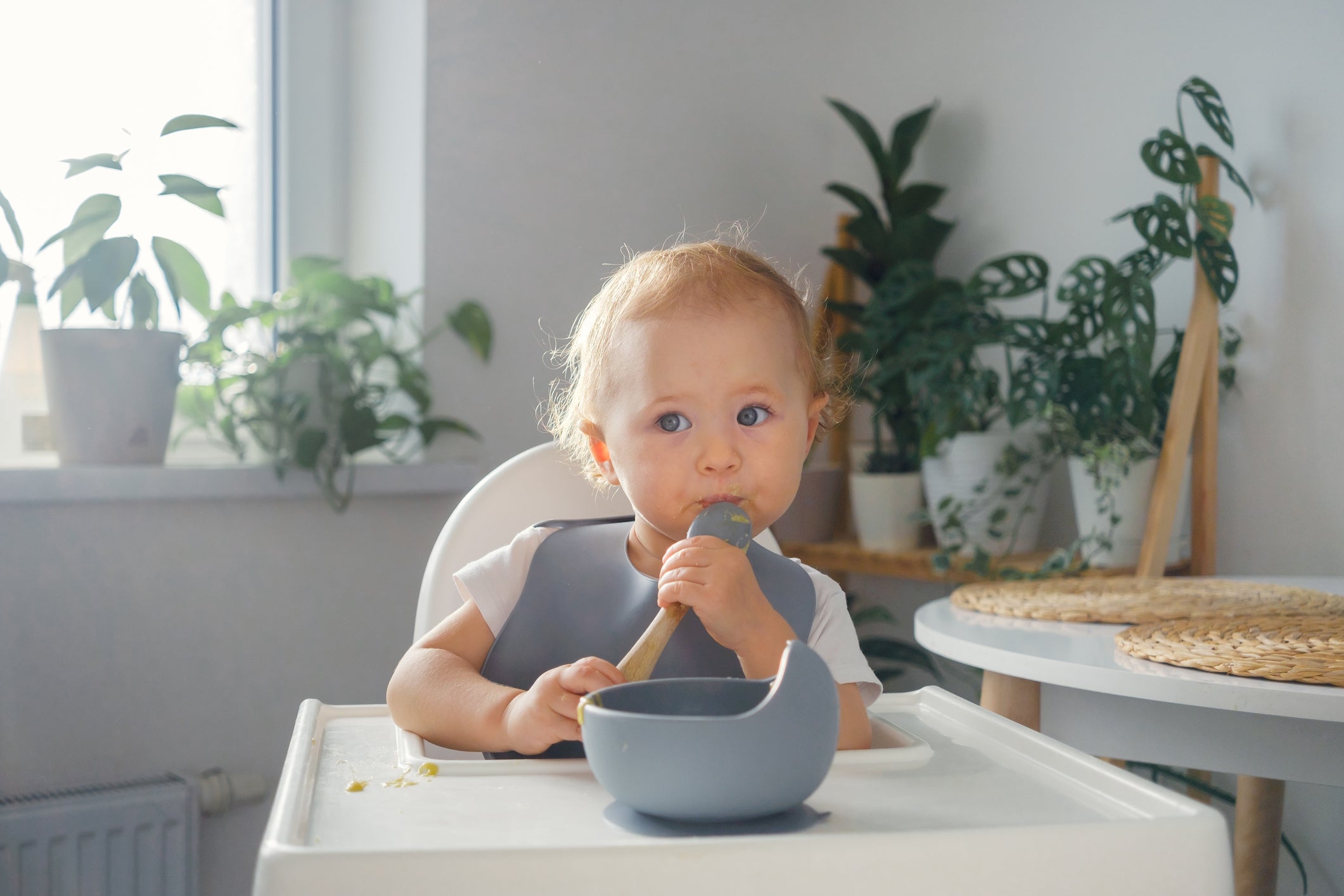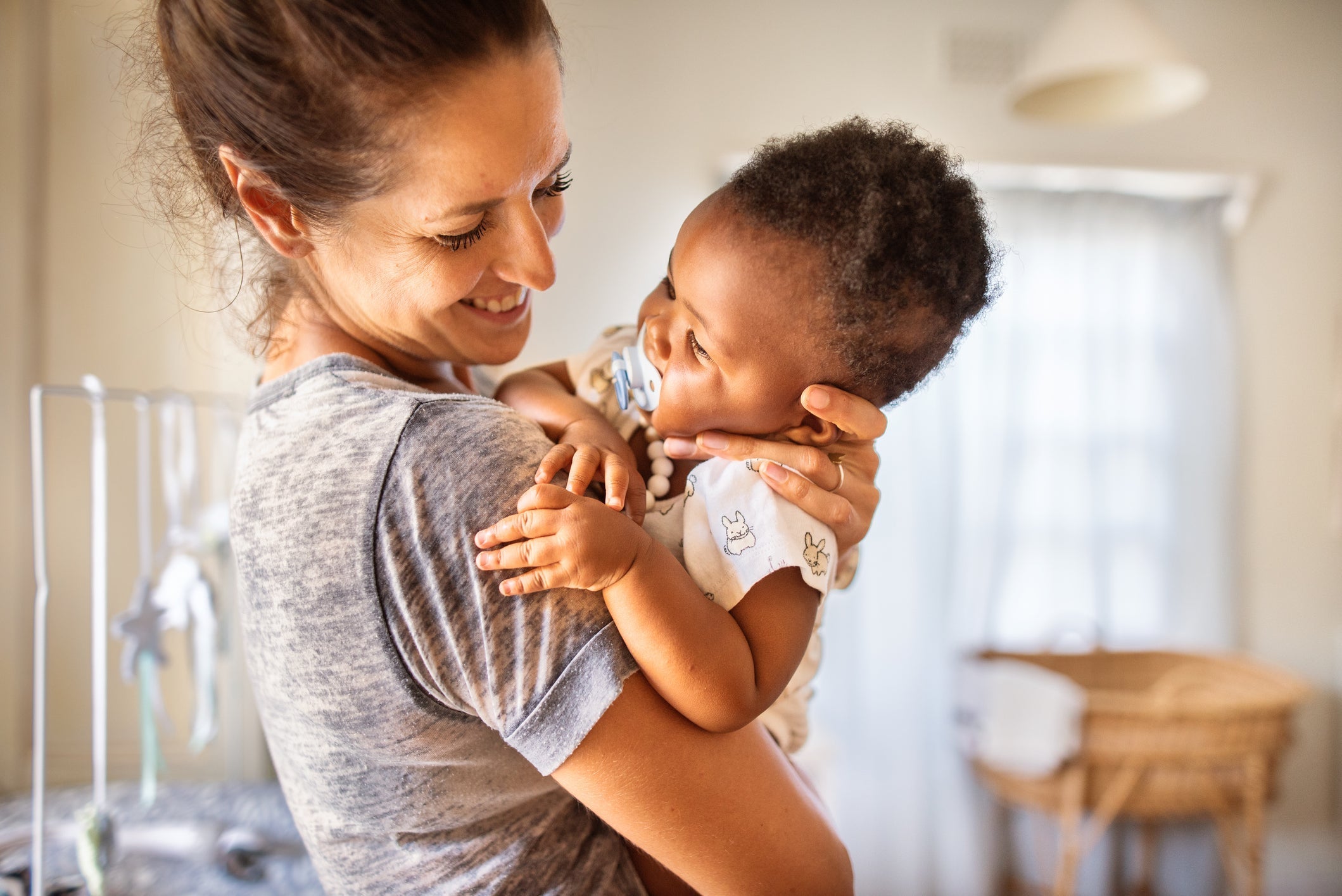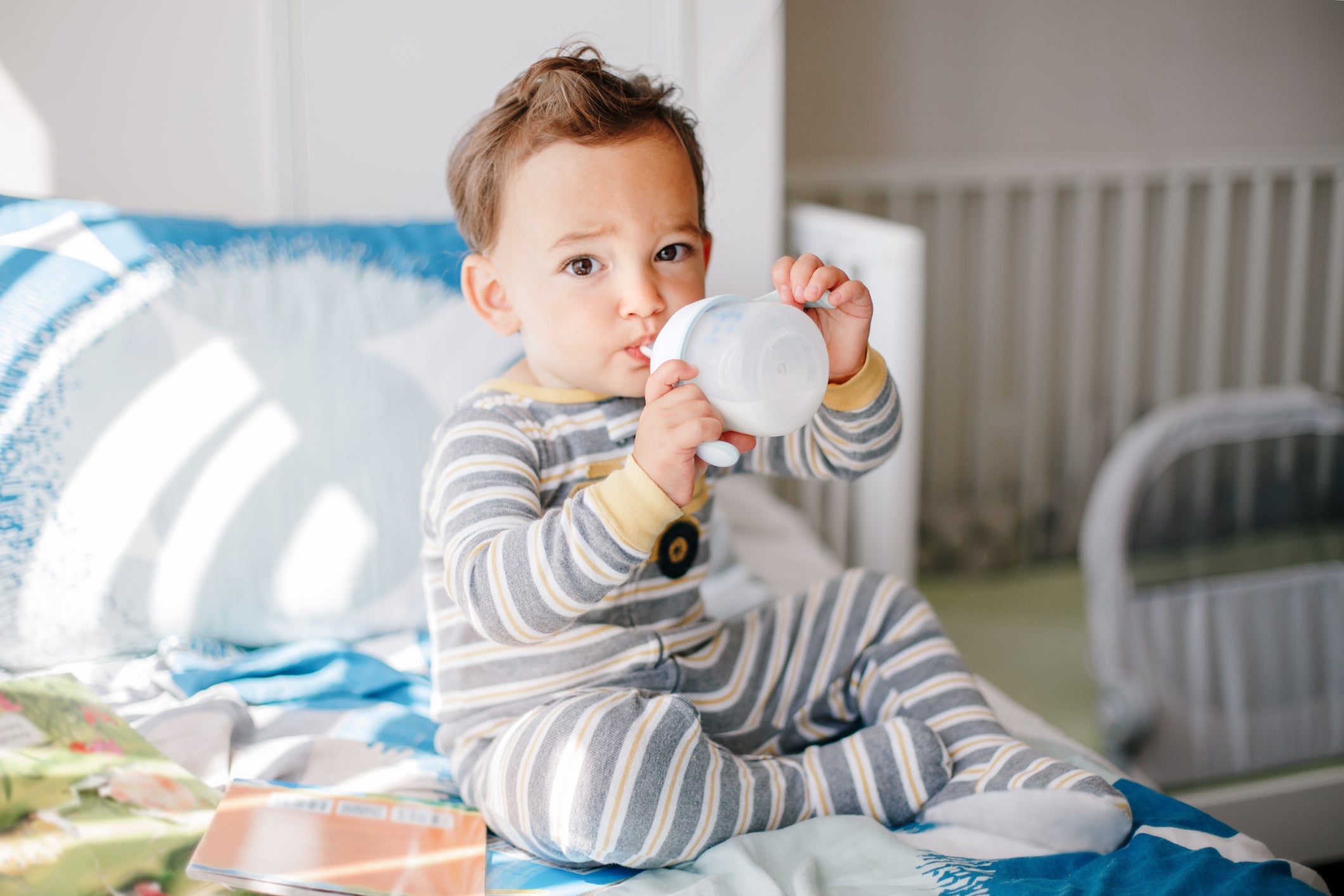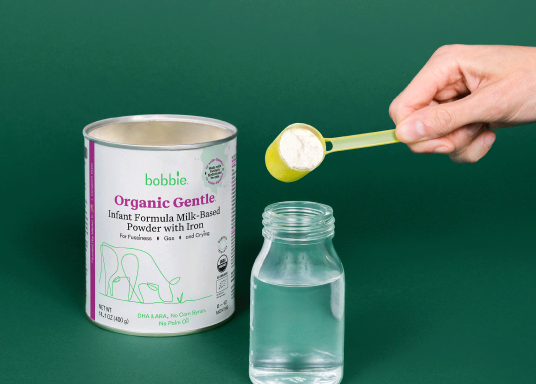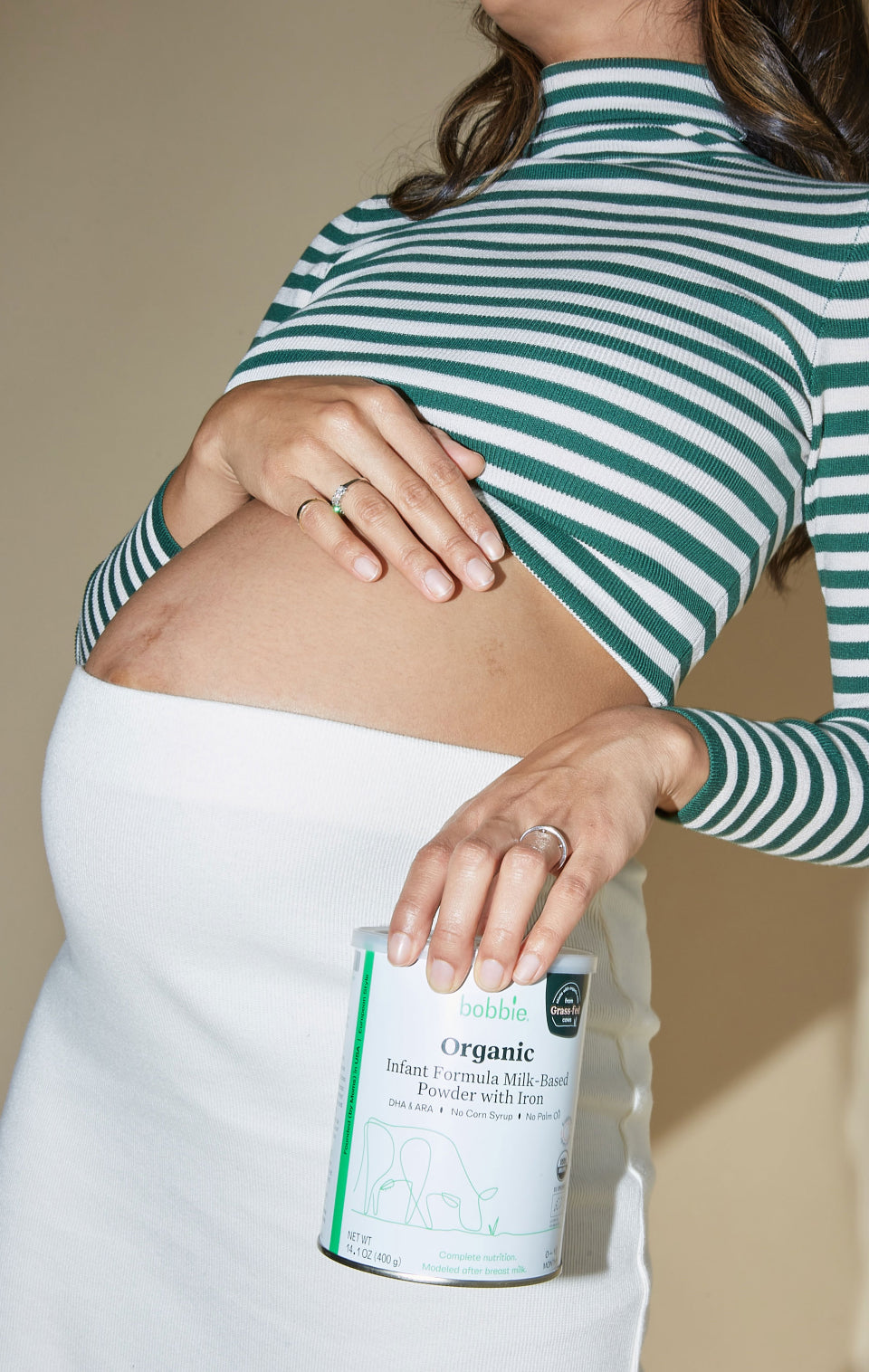Published September 20, 2024

How to Make a Formula Bottle
Ever wish those newborn classes covered more than just diapering and swaddling? Like, how to whip up a perfect formula bottle? While making a bottle isn’t exactly rocket science, getting it right is crucial for your baby's health and development.
That's why we're exploring different types of formulas and the steps you can follow to make a bottle safely and accurately.
Formula 101: Choosing Between Powder, Liquid Concentrate and Ready-to-Feed
Many first-time parents might not realize there are different types of formula — powdered, liquid concentrate and ready-to-feed. The type you choose will determine how you prepare the bottle, so let’s take a closer look at each option:
Ready-To-Feed Formula
Prepared liquid formula is often the easiest option: Just open and pour — no mixing required. It’s ideal for on-the-go feedings or late-night moments, though it does come at a higher cost and there are fewer options of brands and types. However, its minimal preparation time can be a real lifesaver during hectic times. Please refer to the preparation instructions provided on the label by the manufacturer.
Liquid Concentrate Formula
Concentrated formula, on the other hand, offers convenience but needs to be diluted with water. It strikes a great balance between powdered and ready-to-feed options, but can be hard to prep on the go as any extra left in the package needs to be refrigerated. This could be a good choice if you’re looking for a quick prep solution with a bit of a personal touch. As always, refer to the preparation instructions provided on the label by the manufacturer.
Powdered Formula
A powdered formula is the most common and budget-friendly option, making it a popular choice for many parents. Although it requires mixing with water, it has a longer shelf life and is easier to store in bulk.
But here’s a crucial tidbit about powdered infant formula: It’s not sterile! For most babies, this isn’t a problem, especially if they have a strong immune system (i.e. are not immunocompromised) and weren’t born early. However, if your little one has a weakened immune system, was born prematurely, or is under the age of 2 months, your pediatrician may suggest sterilizing powdered formula using boiled and cooled water (see guidelines in the next section!) or opting for liquid concentrate or ready-to-feed formulas, as these alternatives are commercially sterile.
Bobbie Organic Infant Formula is a USDA Organic, EU-style infant formula that meets all FDA requirements. It is a complete nutrition milk-based powder modeled after breast milk and is easy on tummies. It is non-GMO and doesn't have corn syrup, palm oil, or maltodextrin. Shop Bobbie today!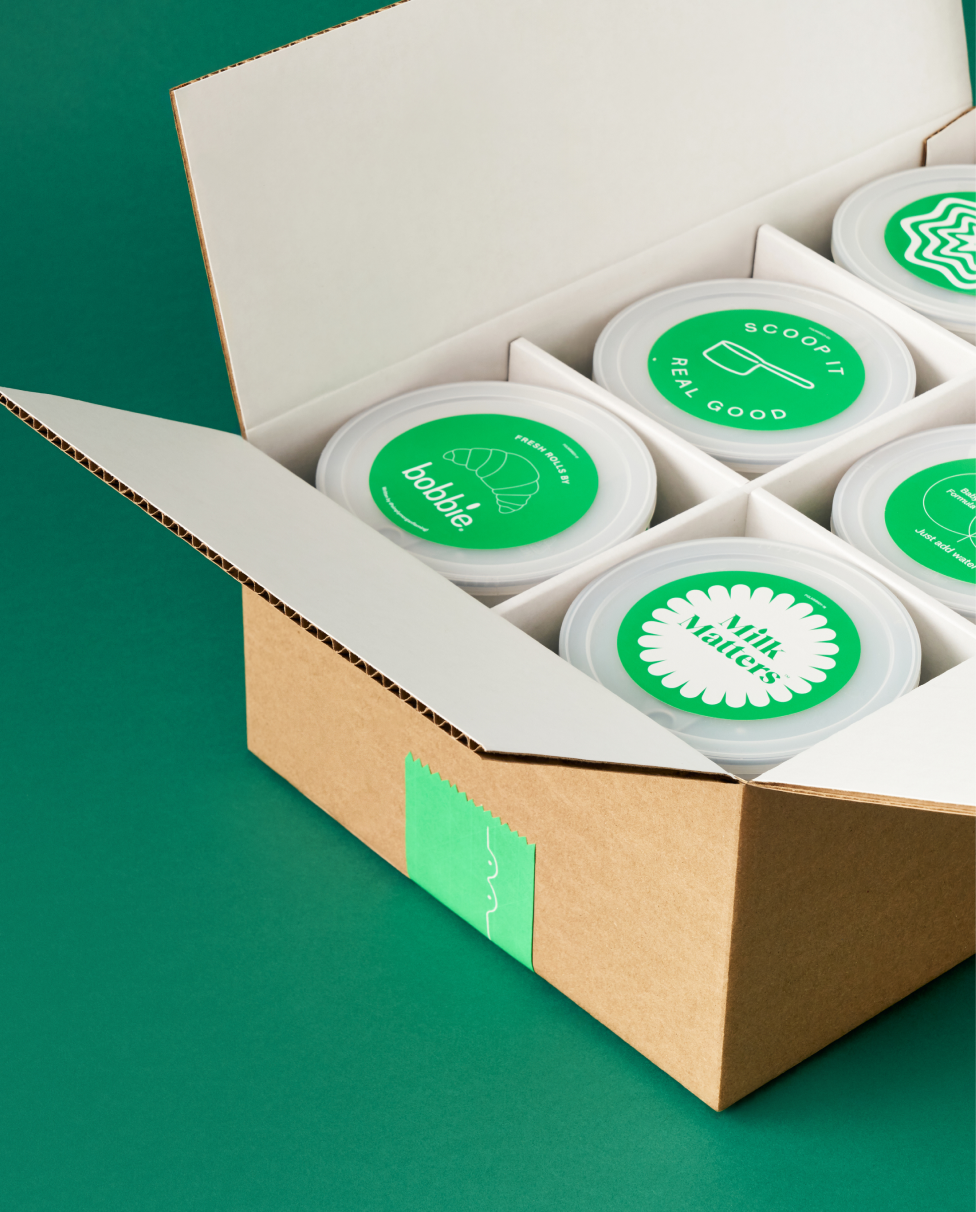
Shop Bobbie Organic Infant Formula

Step-by-Step Instructions To Make a Formula Bottle With Powdered Formula
If you go with a powdered formula, sticking to these six preparation steps is a helpful way to promote health and avoid any bacterial contamination. As always, refer to the preparation instructions provided on the label by the manufacturer.
Step 1: Wash Your Hands
One of the most crucial yet often overlooked steps in powdered infant formula prep is handwashing. To keep your baby’s formula safe, the goal is to cut down on any chance of bacterial contamination. This means keeping bacteria at bay by washing your hands before handling formula or feeding gear. It’s also key to maintain a clean workspace and ensure all bottles, nipples and collars are clean. This way, you reduce the risk of bacteria entering your baby’s bottle and potentially making your little one sick.
Step 2: Add Water to the Bottle
Refer to the preparation instructions on the label for the infant formula — water should be added to the bottle first. Why? If you add powder before water, the powder’s displacement can throw off the bottle’s volume, leading to inaccurate measurements.
You might also wonder what type of water to use for your baby’s bottle. Water used for mixing infant formula must be from a safe source. If you are unsure if tap water is safe, use distilled bottled water or bring cold tap water to a rolling boil for no longer than one minute. But you can always check with your local health department if you’re unsure about your tap water’s safety or quality. If it's not an option (or not your preference), distilled or purified water are great alternatives. No need to splurge on specially labeled “baby” or “nursery” water — store-brand bottled water works just fine. Note that it’s best to avoid well water, as it can have high levels of minerals that your baby doesn’t need: infant formula is already nutritionally complete!
If your pediatrician recommends sterilizing drinking water or formula, the CDC provides these boiling guidelines:
- Bring distilled or tap water to a rolling boil.
- Bring to a rolling boil for no more than one minute.
- Remove from heat and let the boiling water cool for five minutes.
- Mix the cooled boiled water with your powdered formula.
Remember, when sterilizing water, be cautious to avoid burns. Always test the water temperature on the inside of your wrist before feeding to make sure it’s safe for your baby — and for you. Not sure what water to use or whether you need to boil it? Your child’s pediatrician can advise you on the best option for your little one.
Step 3: Scoop and Level the Powder
Most formula containers recommend using a level, unpacked scoop — usually one scoop per 2 ounces of water, though some call for one scoop per 1 ounce or 30 mL of water (but as always, refer to the measuring instructions on the label for your infant formula). To get a level, unpacked scoop, simply drag the scoop through the powder, give it a small, gentle tap to settle any air pockets and then level it off using a built-in leveler. Avoid excessive tapping, as this can pack the formula down. If your formula needs packed scoops, such as some hypoallergenic formulas, check with your child’s care team for the correct method.
Step 4: Add Powder to the Baby Bottle
This step is easy! Just add the right number of scoops to the bottle based on the amount of water already added in the bottle, following the container’s instructions. Stick to formula only — no baby cereal, oatmeal or purees. If you’re thinking about adding supplements like vitamin D drops, gas drops, or probiotics, check in with your pediatrician first to make sure it’s advisable for your infant.
Step 5: Mix the Bottle
Shake, stir or swirl — any method works for mixing baby formula, as long as your hands and equipment are clean. Some parents notice that shaking the bottle can create bubbles or foam. If that happens, try stirring with a clean knife or gently swirling the bottle instead.
Using warm water (about body temperature) can help the powder dissolve better. If you still see foam or bubbles after mixing, try letting the bottle sit for a few minutes to let the bubbles settle. Any leftover foam will break up naturally as the milk passes through the nipple.
Step 6: Store or Serve the Bottle
There are important food safety rules for how long a bottle stays good, and it’s crucial to follow them. If you serve a freshly prepared bottle right away, it should be used within one hour once feeding has begun. If you prepare the baby bottle in advance and don’t use it immediately, it can stay at room temperature for up to two hours or be stored in the refrigerator for up to 24 hours. Once you’ve warmed the bottle, it must be used within an hour. Don’t put it back in the fridge to rewarm later. Sticking to these guidelines helps keep your baby’s formula safe and reduces risk of bacterial contamination.
Tips for Preparing Infant Formula
Formula feeding doesn’t have to be a struggle! Check out these tricks to make nighttime, travel, and daily feedings smoother:
- Pre-measure the water: Fill each bottle you’ll need for the day (or night) all at once, cap them, and keep them on the counter for easy access. Just add the powder and mix when it’s feeding time.
- Use a formula mixing pitcher: Many parents find it convenient to prepare a day’s worth of formula in a large batch. That way, you can pour from the prepared formula pitcher or jar whenever you need a bottle. Once prepared, the pitcher should be stored in the refrigerator no longer than 24 hours.
- Set up a feeding station near your baby’s sleep space: Avoid those groggy midnight kitchen trips by setting up a clean, accessible station right next to your baby’s sleep area. This might include clean, empty bottles, formula, water, and burp cloths.
- Purchase an adequate number of bottles: Babies eat a LOT in their early weeks — and on an unpredictable schedule. Having plenty of bottles and nipples on hand will save you from a frantic search for a clean bottle when your little one is hungry and you’re short on time.
- Take appropriate safety precautions: If you’re preparing formula in advance, store it in the refrigerator and use it within 24 hours to avoid bacterial growth. Never leave prepared formula at room temperature for more than two hours, and never reuse leftover formula from a previous feeding. Once a feeding has begun, the formula should be used within 1 hour.
- Make traveling a breeze: Keep formula safe and accessible while on the move by using a well-insulated cooler to maintain the right temperature. Pre-measure powder or use liquid ready to feed formula, and remember to bring extra bottles and a few clean containers — just in case.
Sign up to get the scoop on feeding, sleep, poop, and so much more. By singing up for email, you are to receive marketing emails from Bobbie and can manage your email preferences or unsubscribe at anytime

Your go-to resource for all things new baby.
Formula FAQs for Stress-Free Preparation and Feeding
Here’s a handy guide to some common concerns to help make feeding time easier for your household:
How do I know if my baby is getting enough formula?
Monitor your baby's weight gain, diaper output, and overall mood. Rest assured that a content, steadily gaining baby with plenty of wet and dirty diapers is likely getting enough formula. But remember you can always consult your pediatrician for personalized guidance.
How should I clean and sterilize baby bottles and feeding equipment?
Start by washing bottles and nipples with hot, soapy water, using a bottle brush. Or, sterilize by boiling them in water for five to 10 minutes or using a steam sterilizer. Then, let them air dry on drying rack or clean paper towel.
Can I prepare formula in advance and store it?
Absolutely! You can prepare infant formula in advance and store it in the refrigerator, but be sure to use it within 24 hours. If you’re warming it, do so just before feeding, and never leave prepared infant formula at room temperature for more than two hours.
How do I transition my baby from one type of formula to another?
For a smooth transition, some parents may prefer to mix the old formula with the new one (preparing them separately according to the label instructions on the container), gradually increasing the amount over a week or so. This slow adjustment can help your baby’s tummy get used to the change without causing too much fuss. Other parents may prefer to do an immediate, “cold turkey” switch!
What should I do if my baby has an allergic reaction to formula?
If you suspect a potential allergy or sensitivity, it's best to stop using the formula and contact your pediatrician. They can help you with next steps and find a suitable alternative for your baby’s needs.
How to Make A Bottle? Check!
With these tips and tricks, bottle feeding can be a smooth, safe and enjoyable experience — if you decide it’s the right choice for your family. And remember to choose a formula that meets your baby’s unique needs and preferences, always checking with your child's pediatrician.
Looking for a formula that’s designed to support infant health and growth? Shop Bobbie organic infant formulas to find the perfect fit for your little one and make feeding time even smoother.
Bobbie Organic Infant Formula is a USDA Organic, EU-style infant formula that meets all FDA requirements. It is a complete nutrition milk-based powder modeled after breast milk and is easy on tummies. It is non-GMO and doesn't have corn syrup, palm oil, or maltodextrin. Shop Bobbie today!
Shop Bobbie Organic Infant Formula

The content on this site is for informational purposes only and not intended to be a substitute for professional medical advice, diagnosis or treatment. Discuss any health or feeding concerns with your infant’s pediatrician. Never disregard professional medical advice or delay it based on the content on this page.








